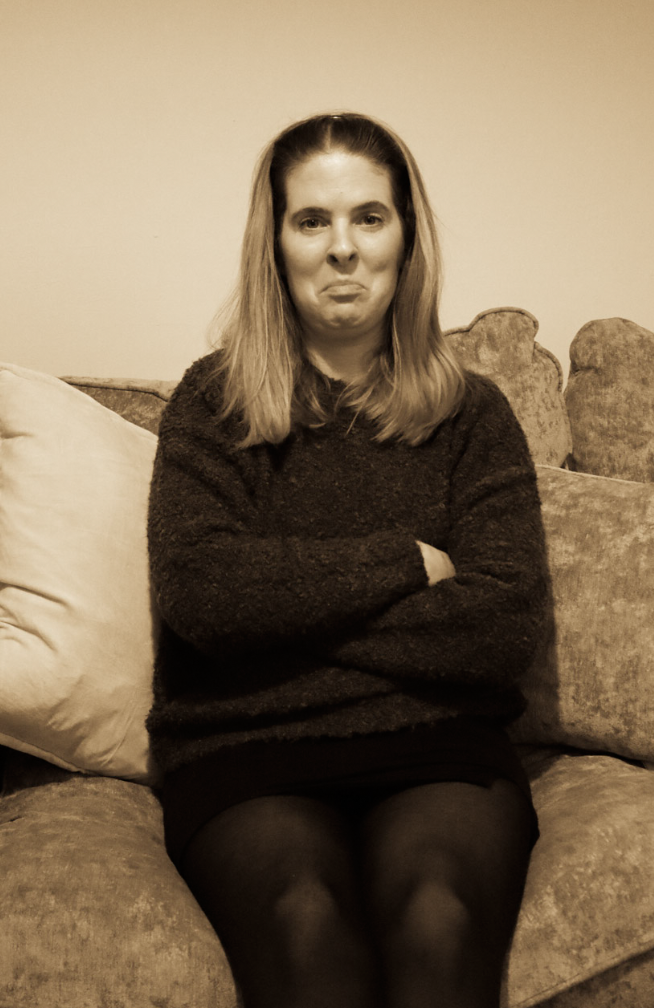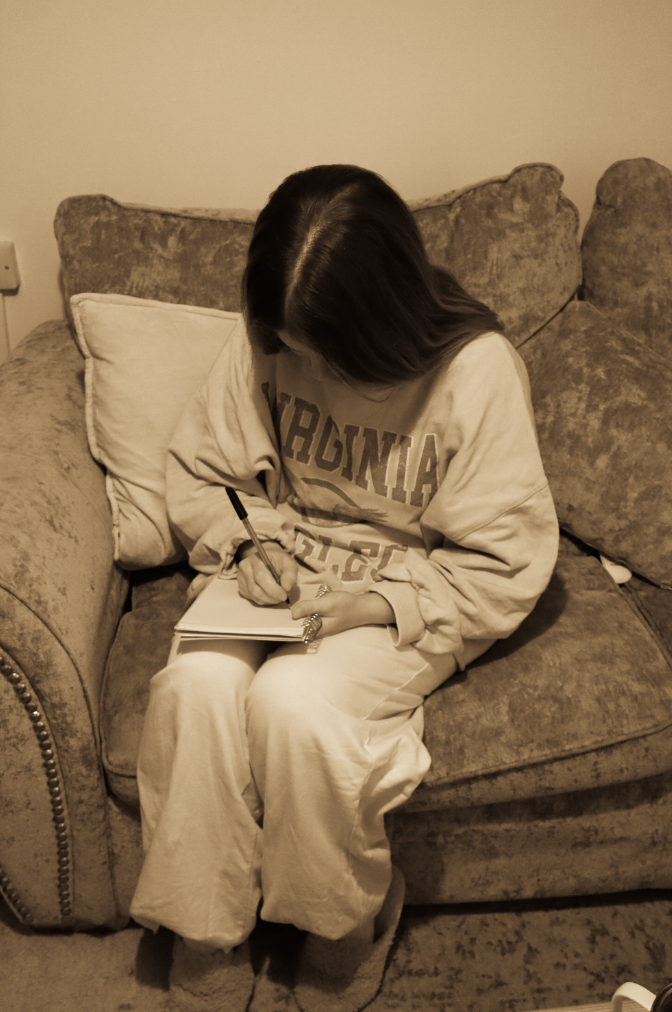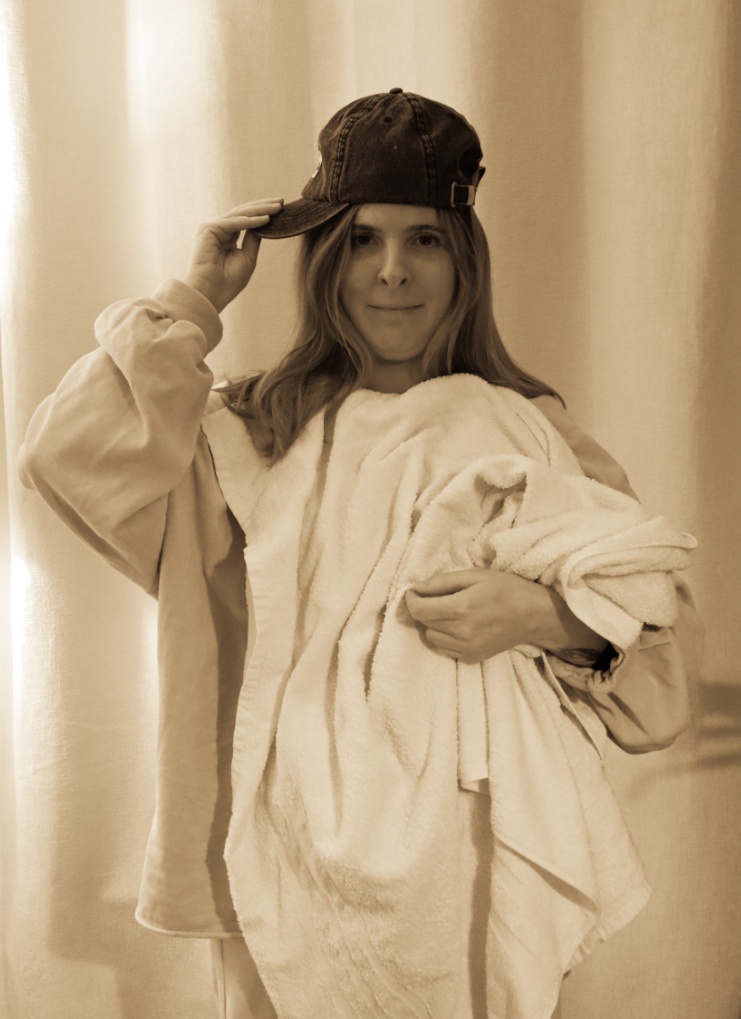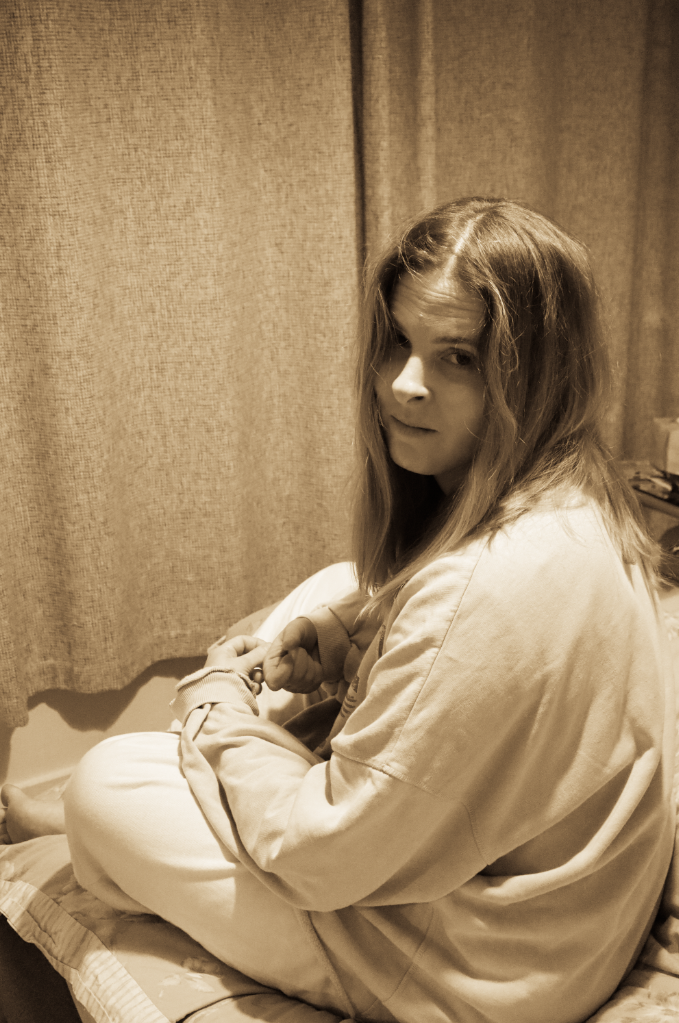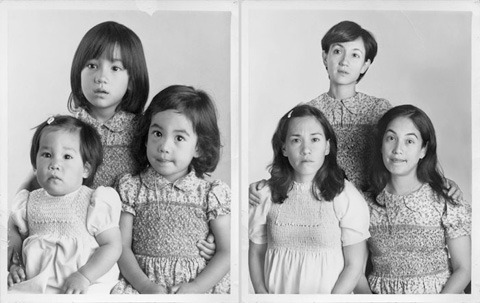Here is an online link to my photobook: Remember When
All posts by Ruby Garcia
Filters
Photobook:
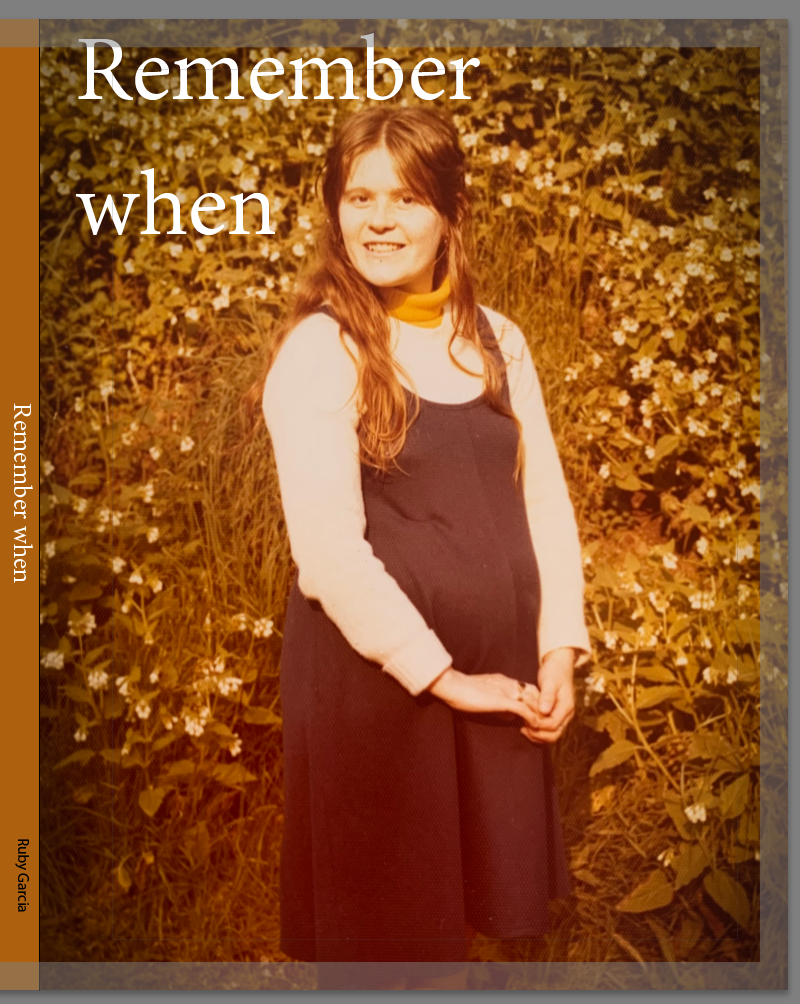
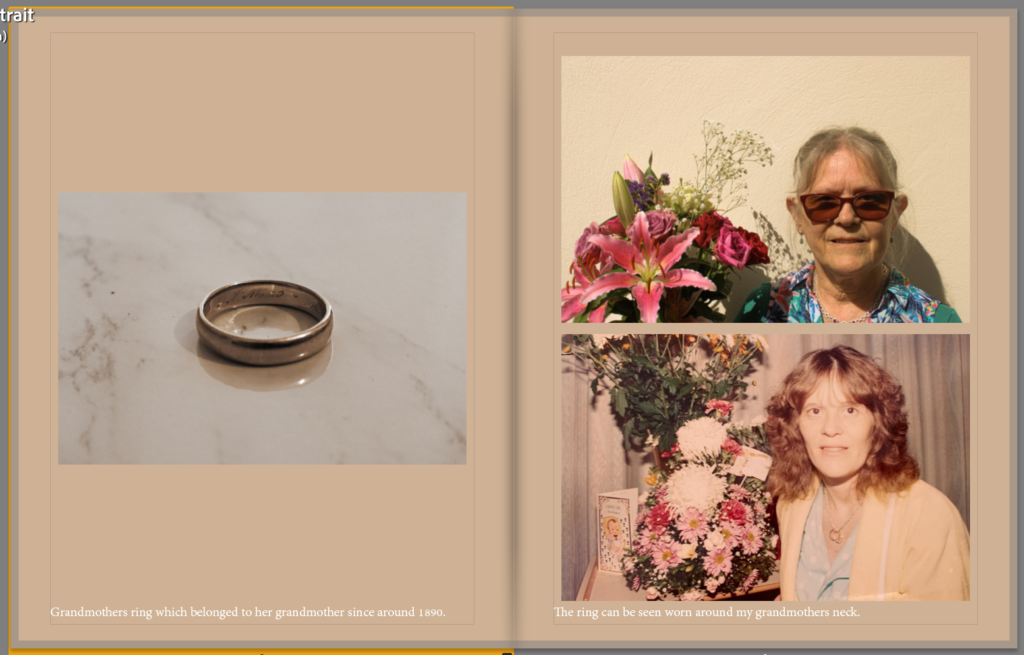
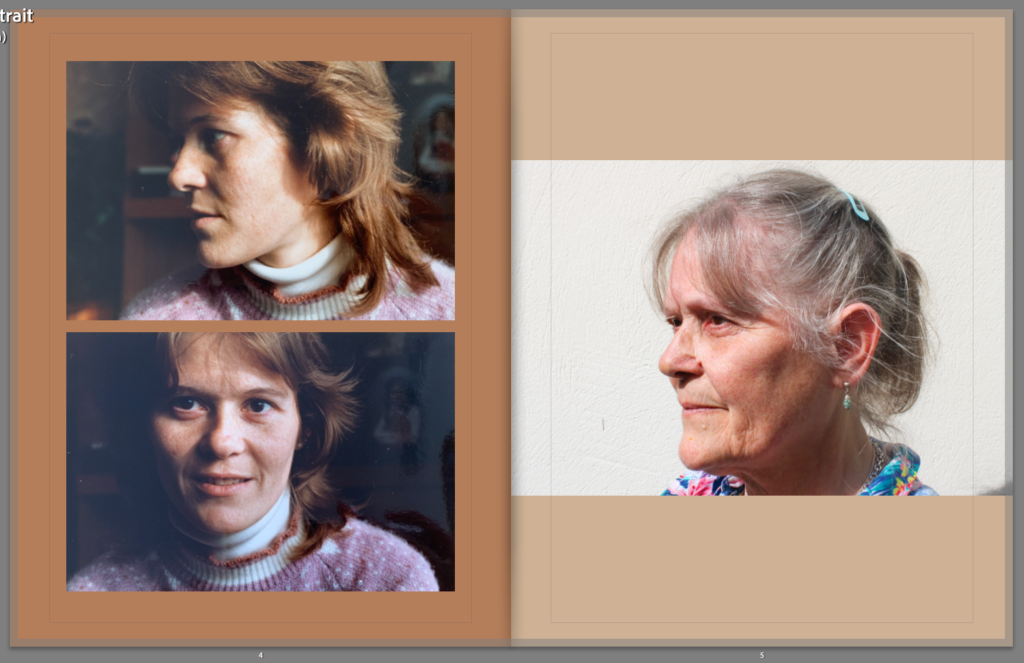
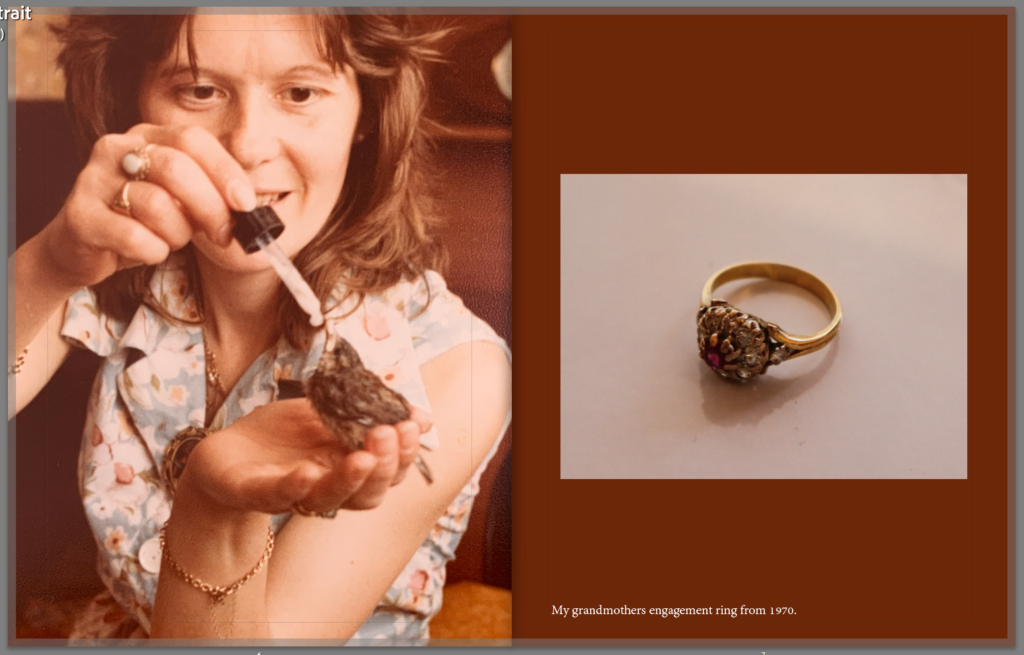
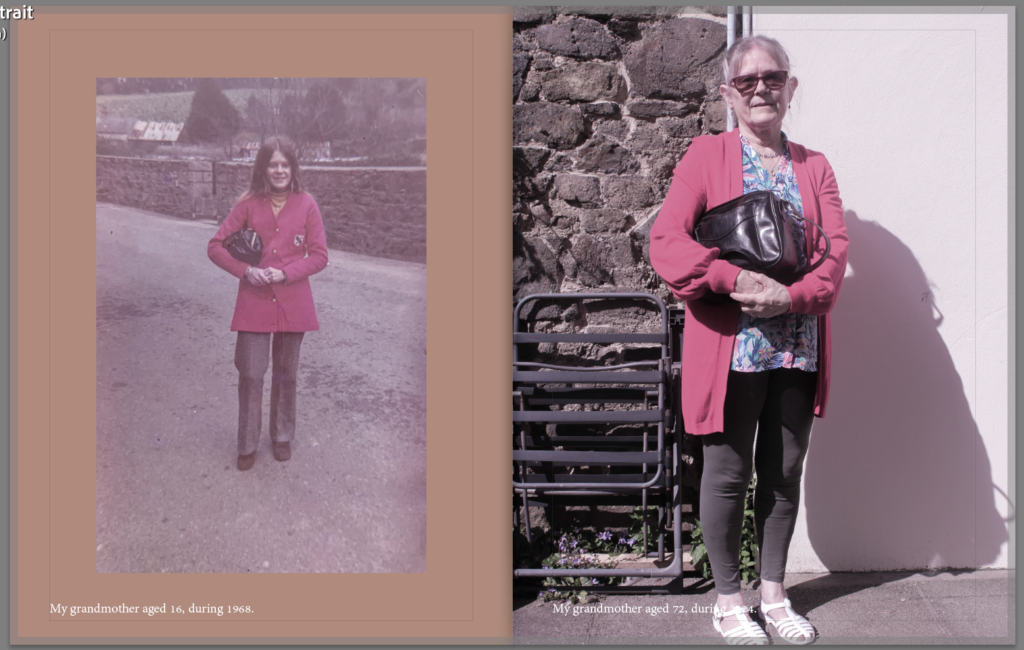
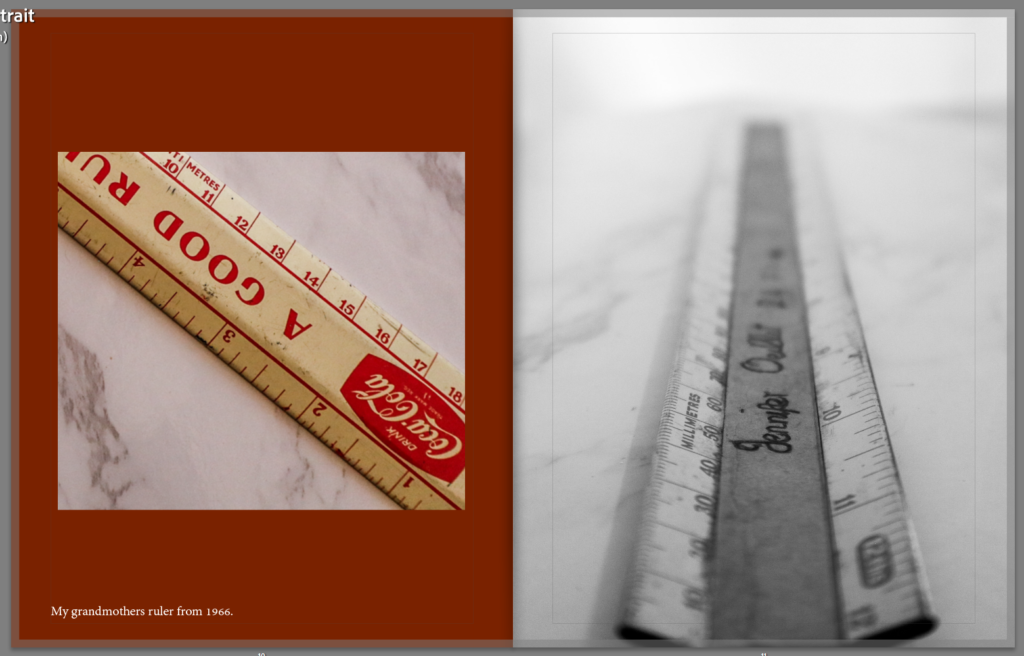
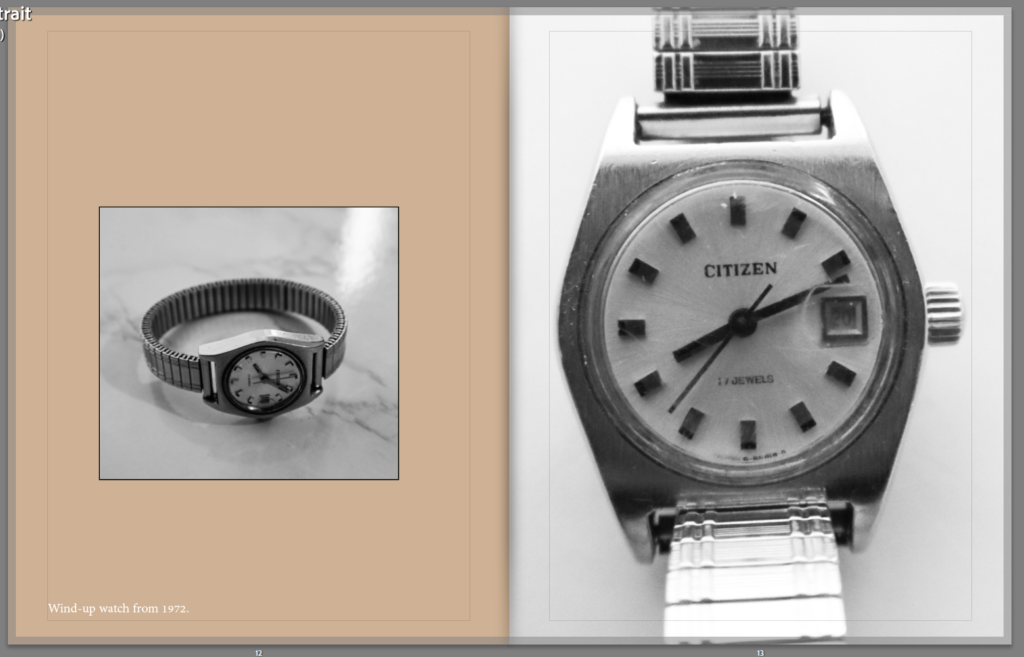
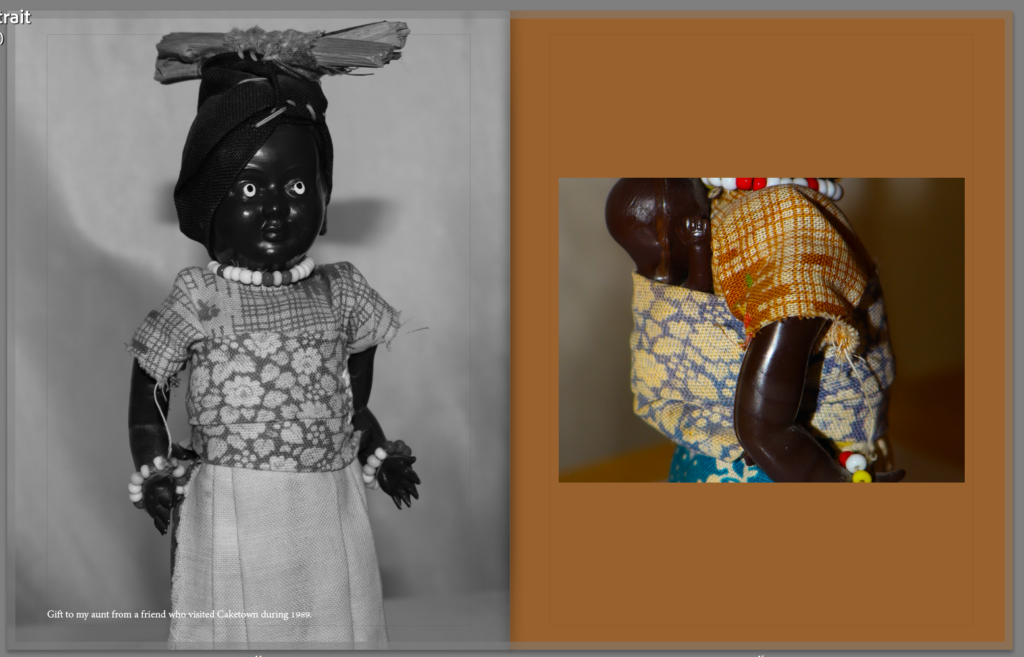
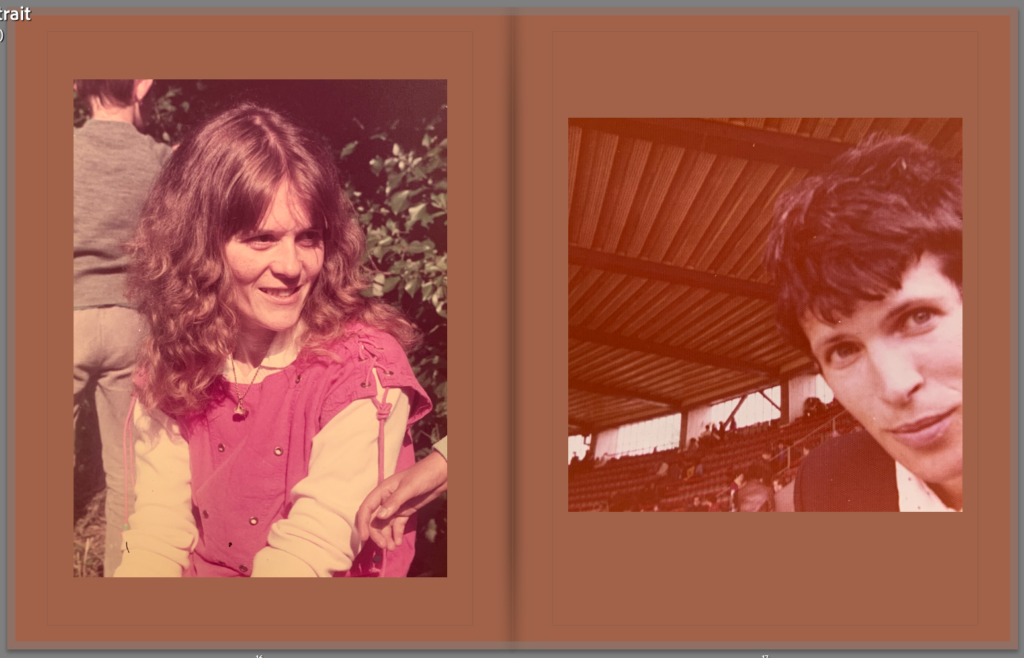
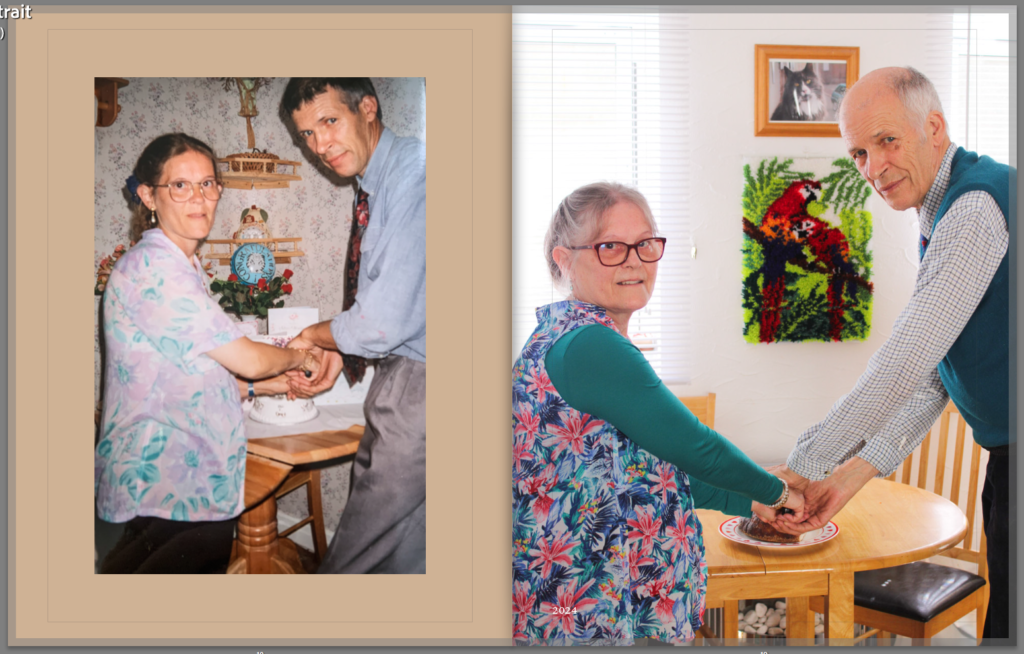
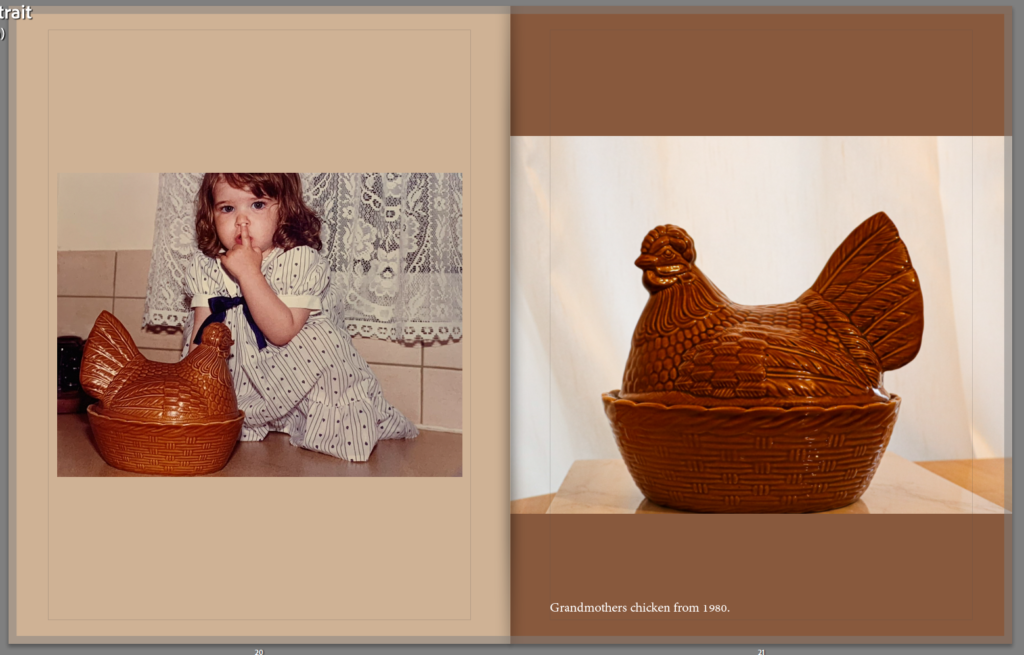
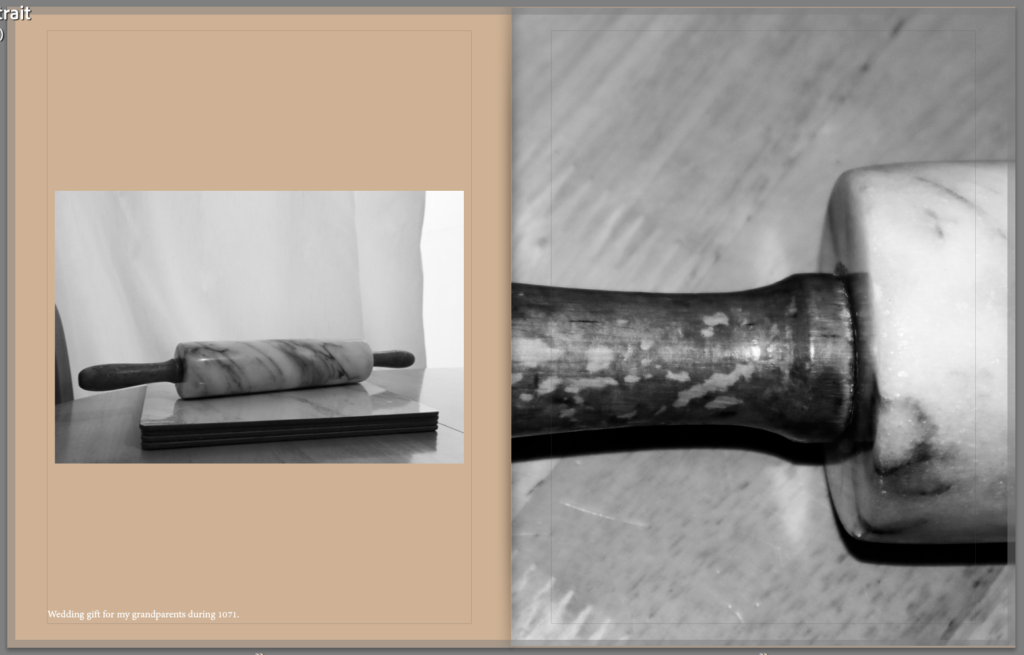
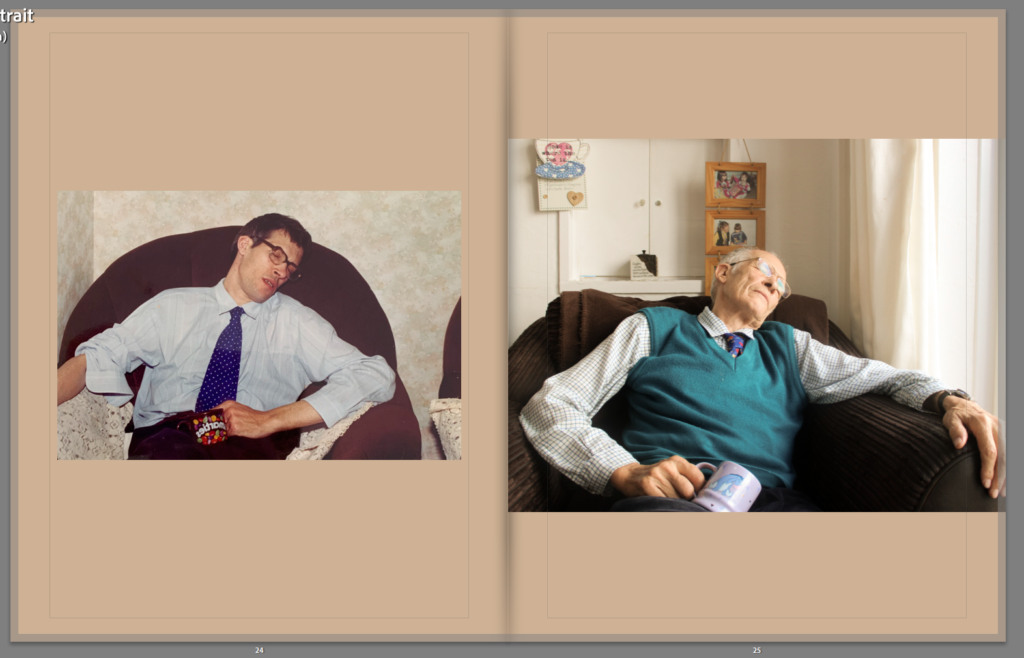
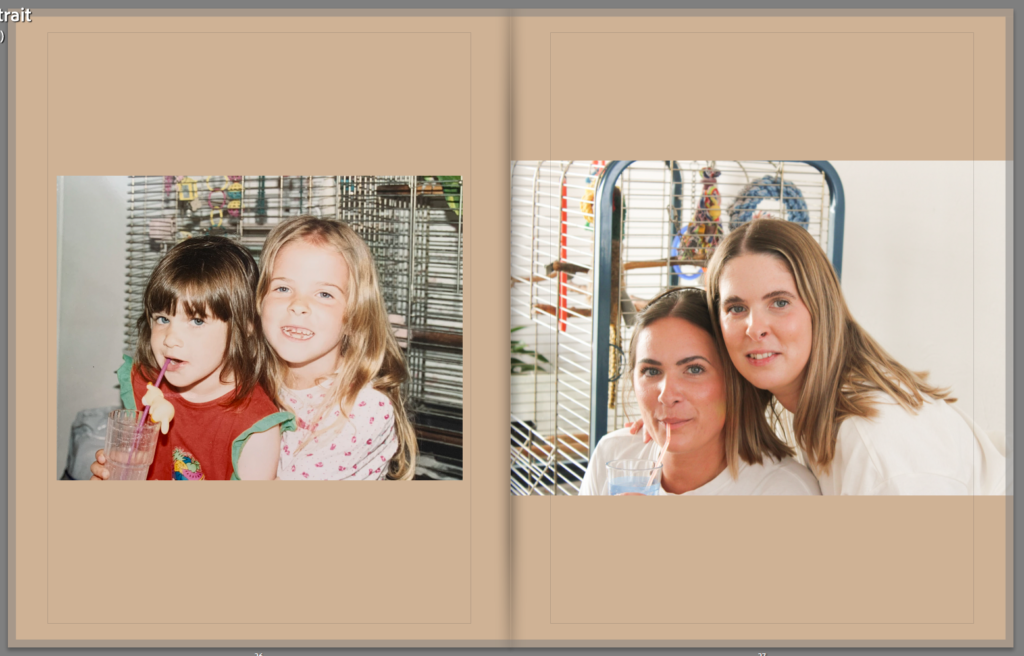
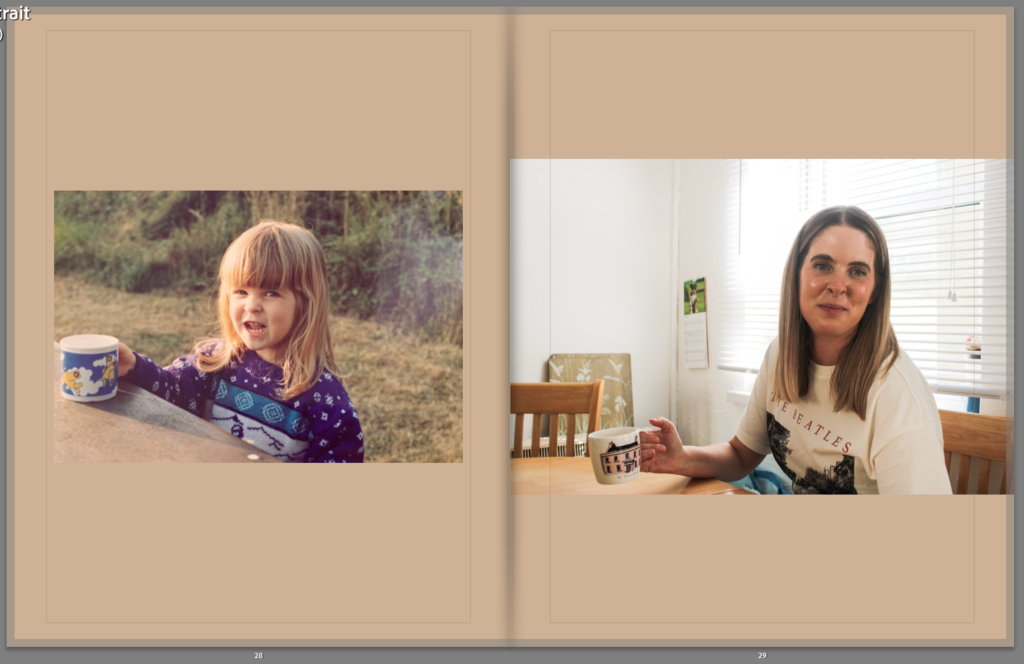
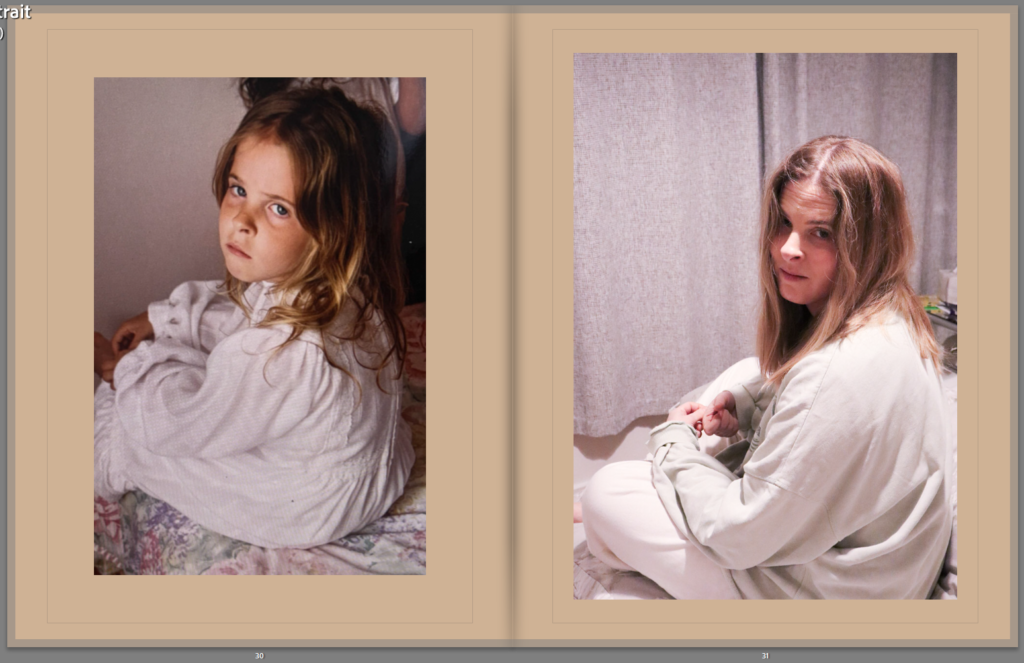
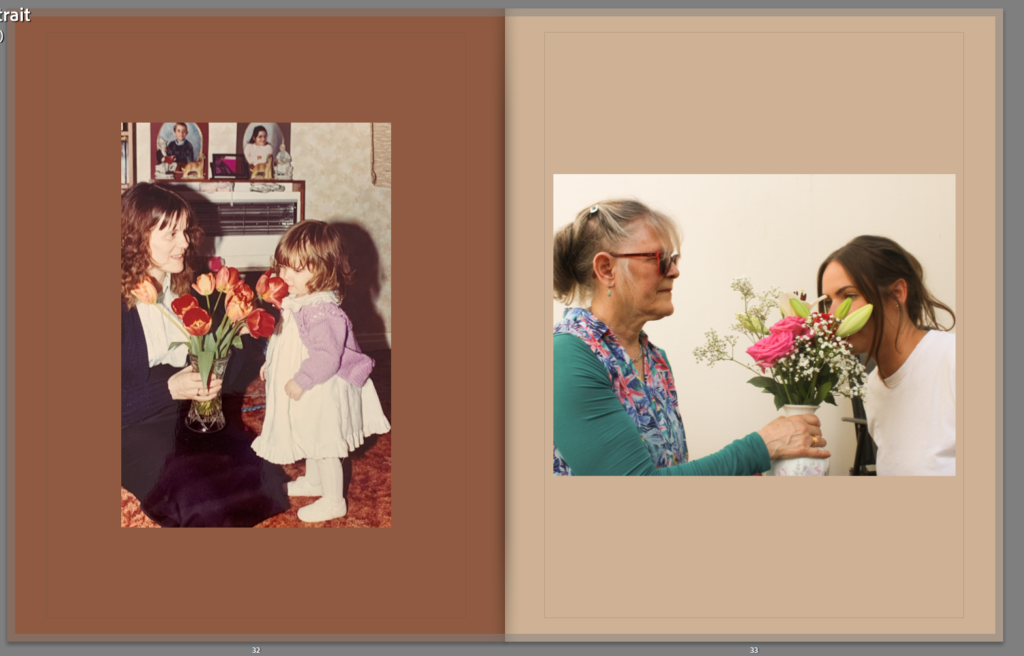
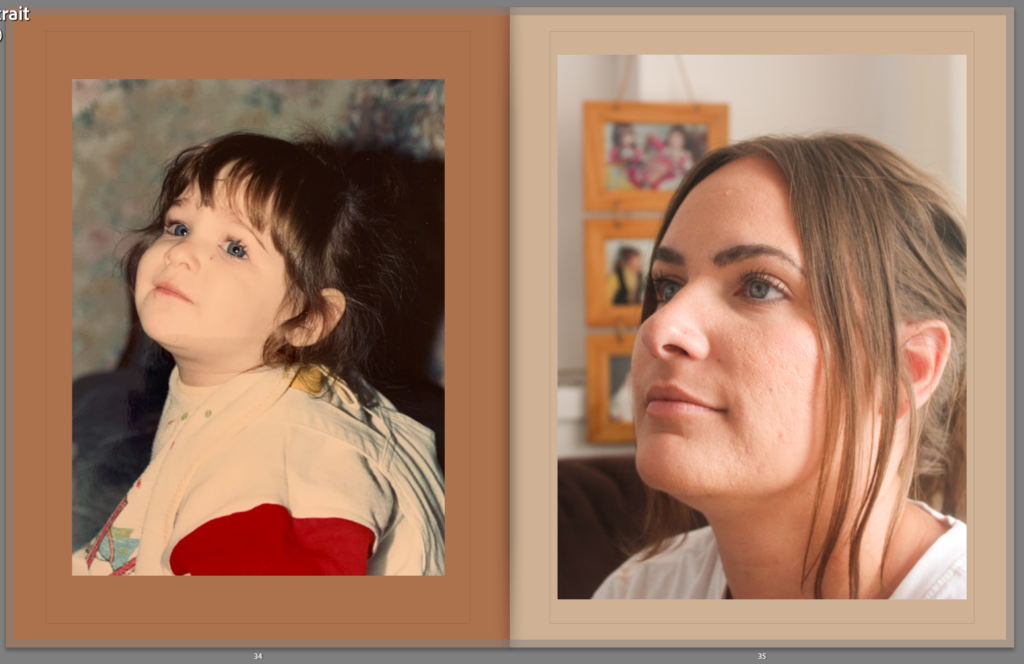
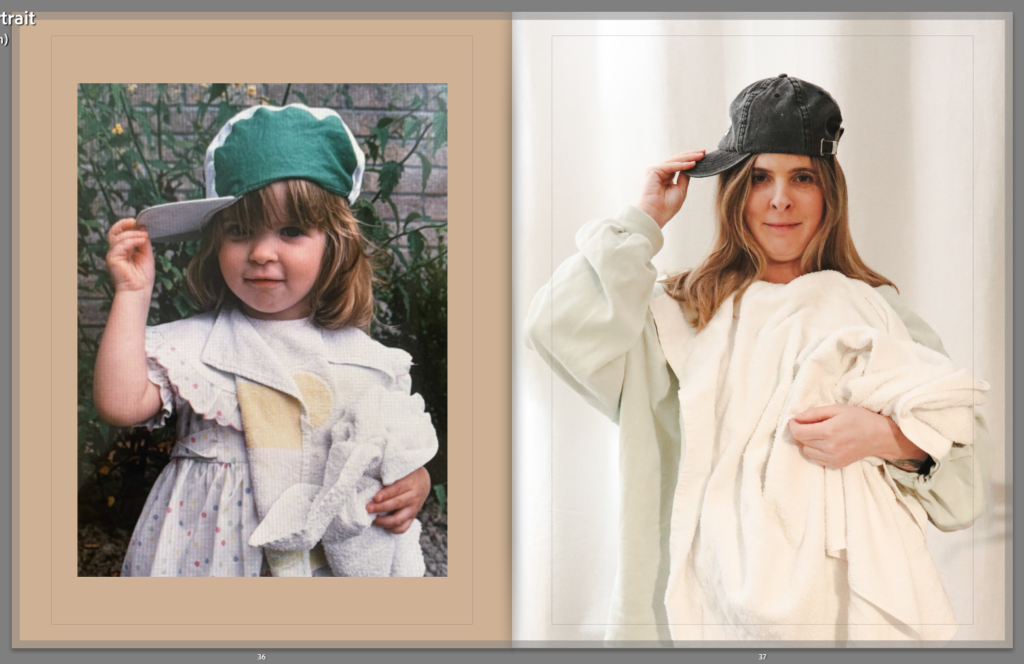
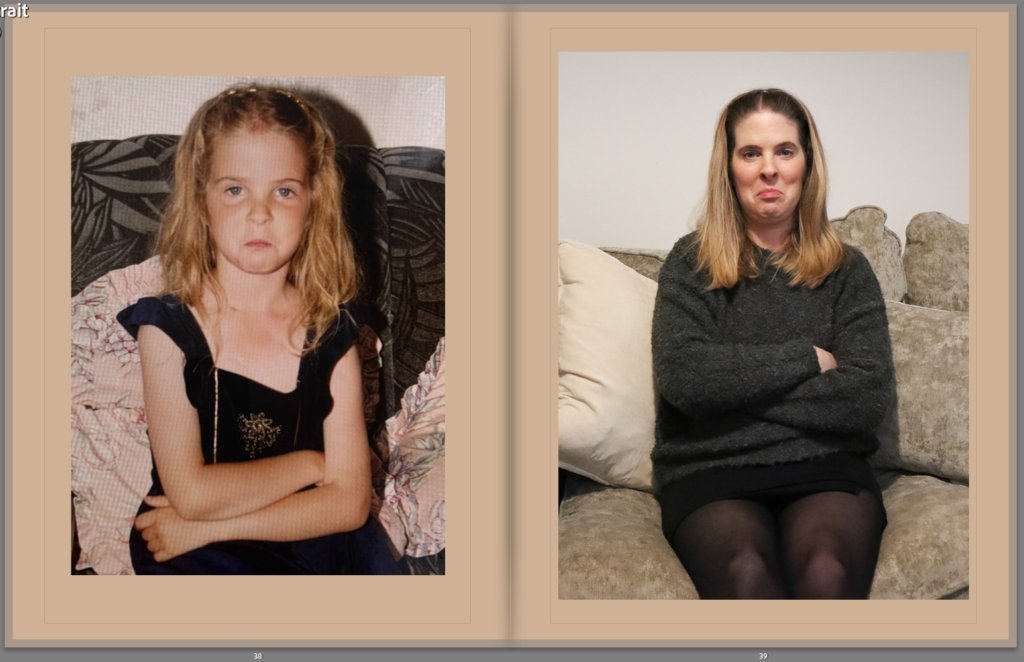
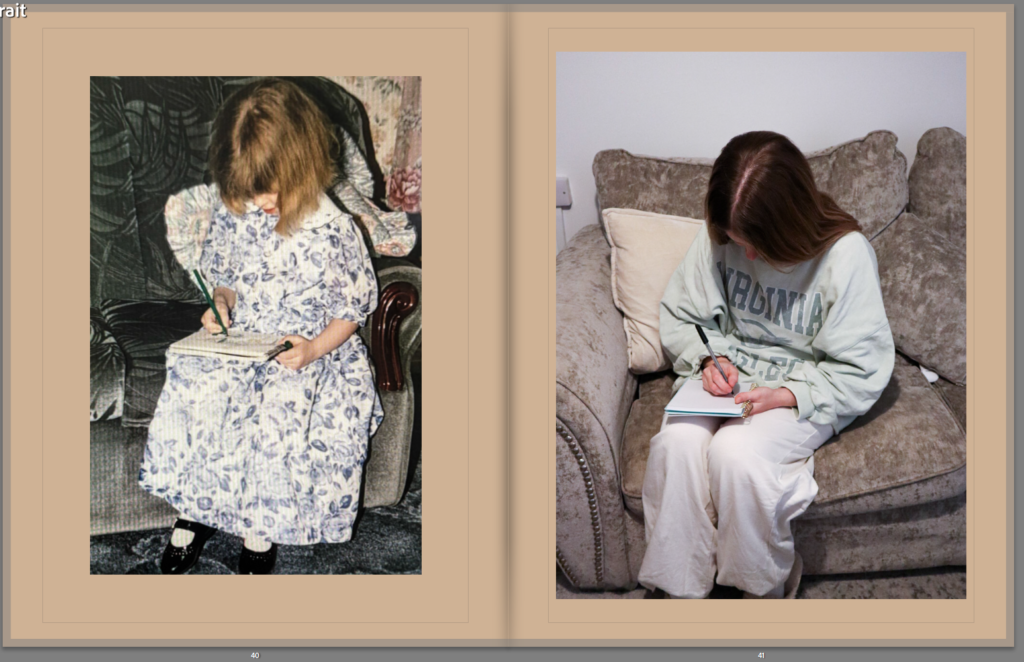
Virtual Gallery
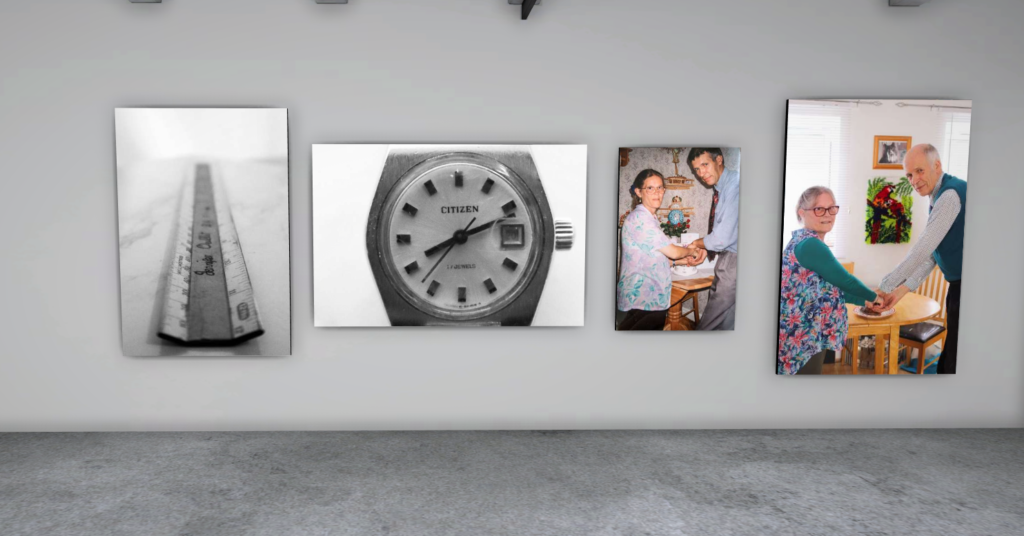
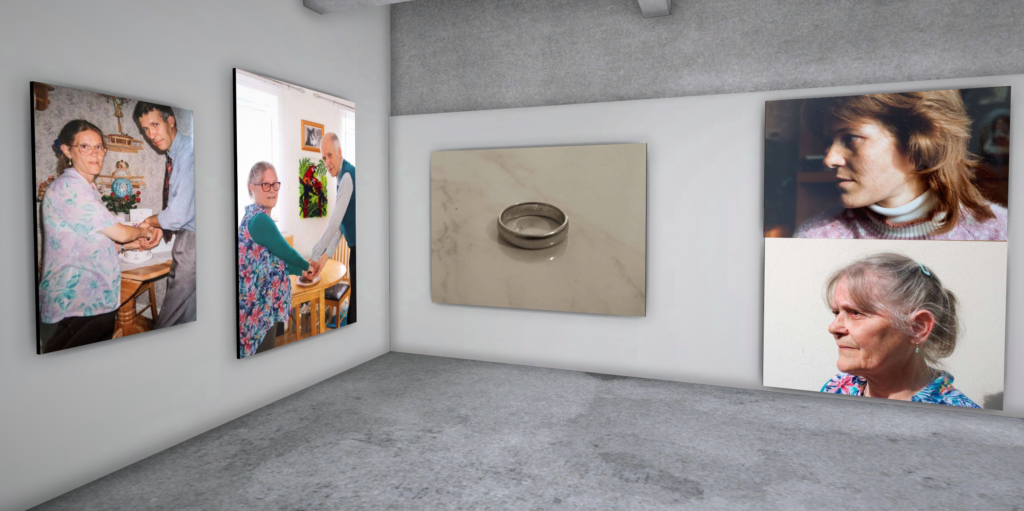
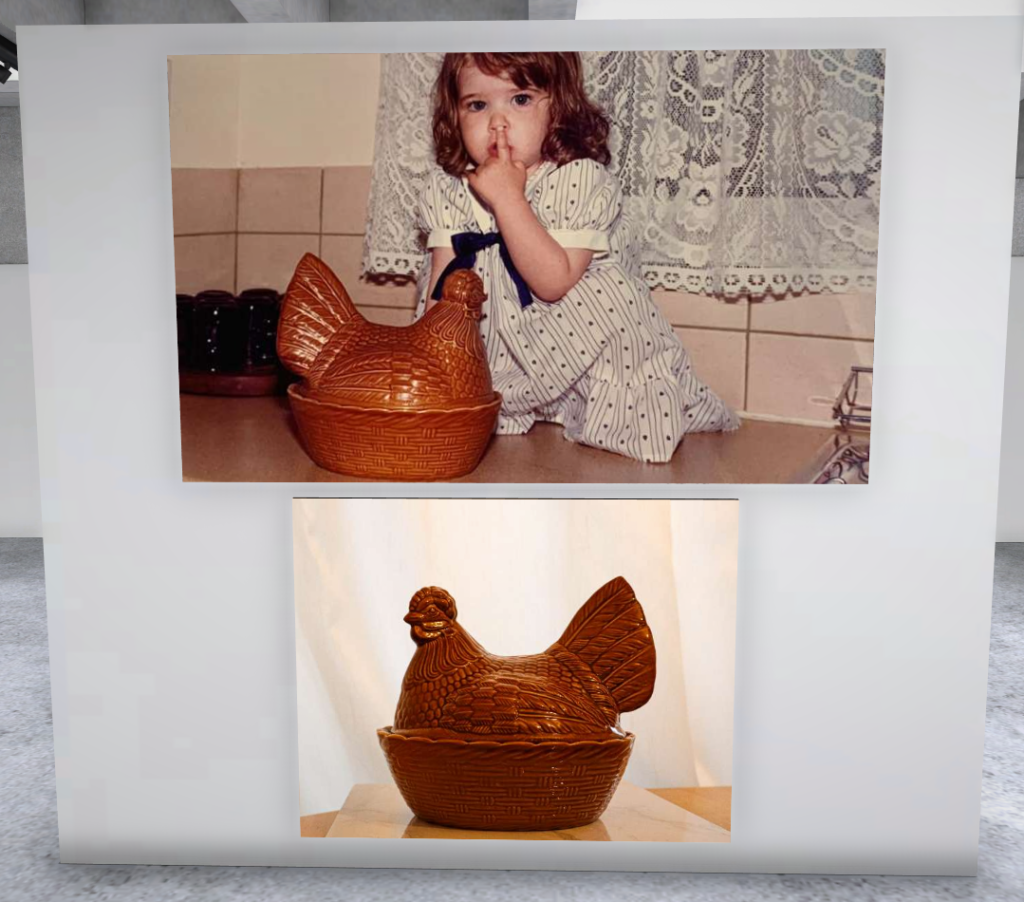
Evaluation:
Overall my images have been successful as I was able to restage multiple older images and make them look similar. I also like how I have edited many of the images to suit the certain tones of the older photos. If I were to redo this project I would try use similar backgrounds while restaging some of the images.
Photobook Specification
Narrative:
- 3 words – My families past.
- A sentence – The past of my family and memories created over the years.
- A paragraph – My book will focus on my families memories created over the years, I will do this through photographing them in similar ways to older photographs. I will also photograph old objects which hold meaning to them.
Design: Consider the following
- How you want your book to look and feel – I want my photobook to have an older look as my project is linked to memories and the past. Therefore for the cover I will use a warm toned brown to create a sepia look.
- Paper and ink – Some of my pages will be darker brown colours and some will be a lighter beige, all will be sepia tones.
- Format, size and orientation – For the size of my book I will use a standard portrait as many of my images are portrait images.
- Binding and cover – The cover of my photobook will be an older image which I have found. I will make the back cover a certain colour to suit the front cover.
- Title – For my title I will name my book ‘Remember when’, as it is all about restaging old images and reliving old memories.
- Design and layout – I will have a different layout on each page, some images taking up the whole page, others only taking up a section.
- Editing and sequencing – For my sequencing the original image will be on the left, and the new restaged image will be on the right.
- Images and text – Some of my images will be black and white, mainly the ones of objects, the portraits will mainly be coloured. It will be a mix of images I have taken as well as images from the past. The text in my book will be small and only on pages where it is relevant.
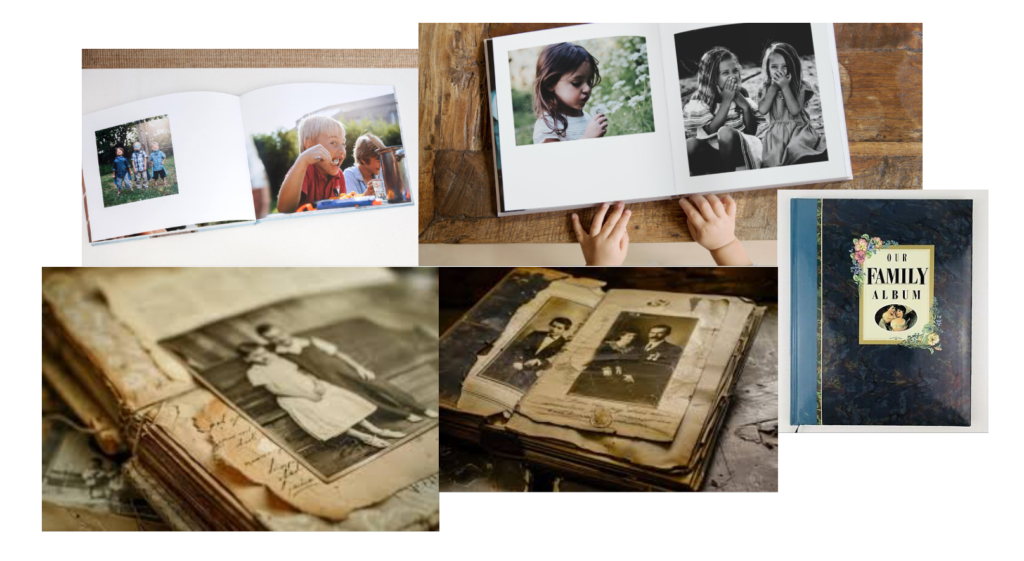
My finished Photobook:
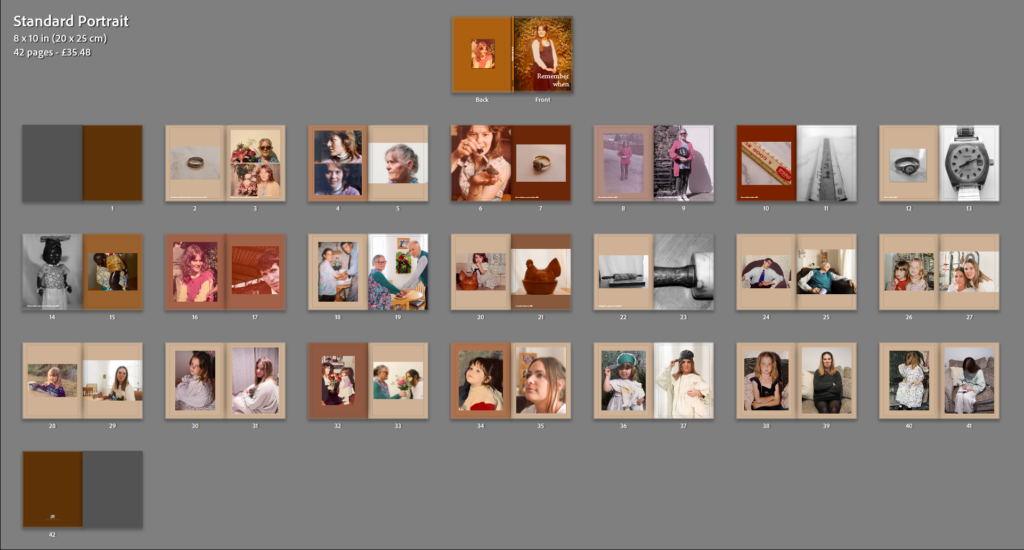
Objects edits
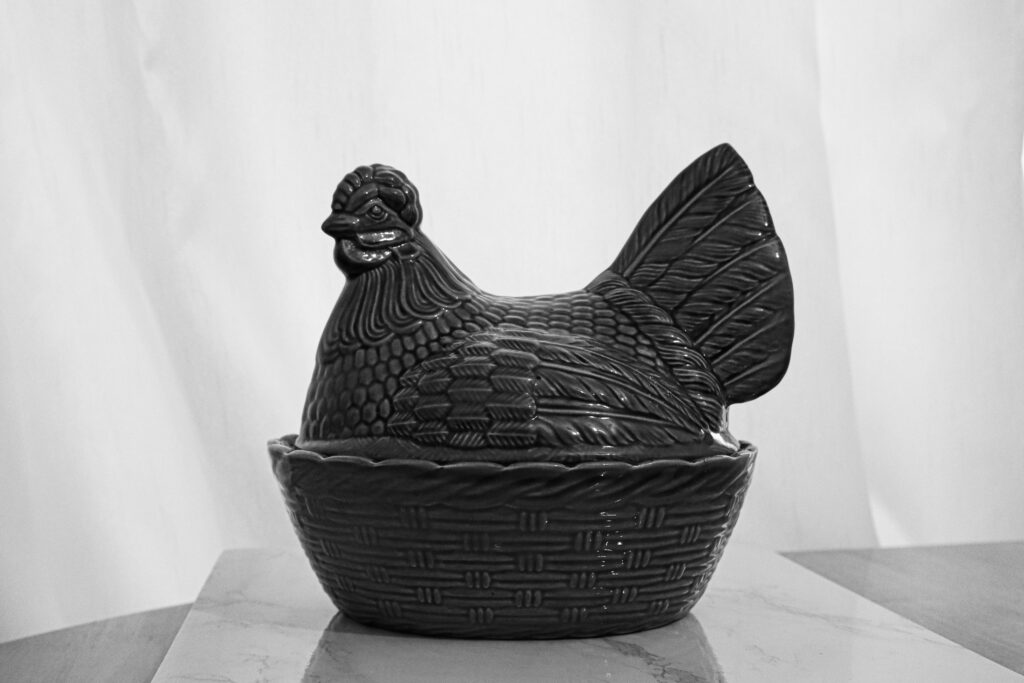
This chicken belongs to my Grandmother and is from 1980. I chose to edit this image black and white along with the other images of objects as it gives the idea they are linked to the past.
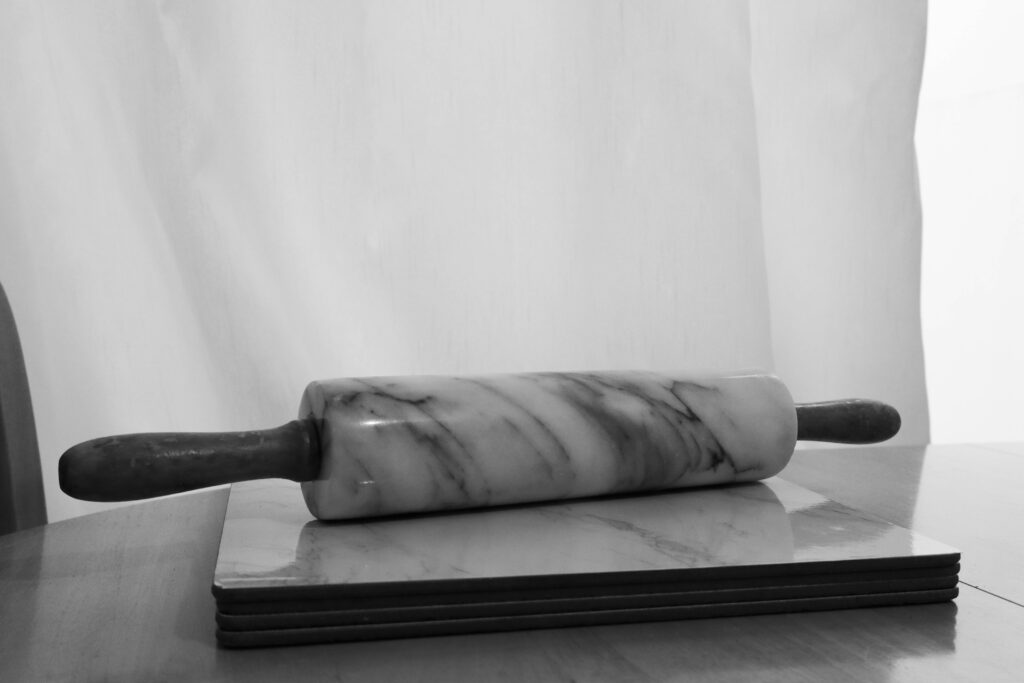
This was a wedding gift to my grandmother during 1971, and has stayed with her ever since.

This ruler was given to my grandmother during 1966, when she was 14, and she has kept it since then.
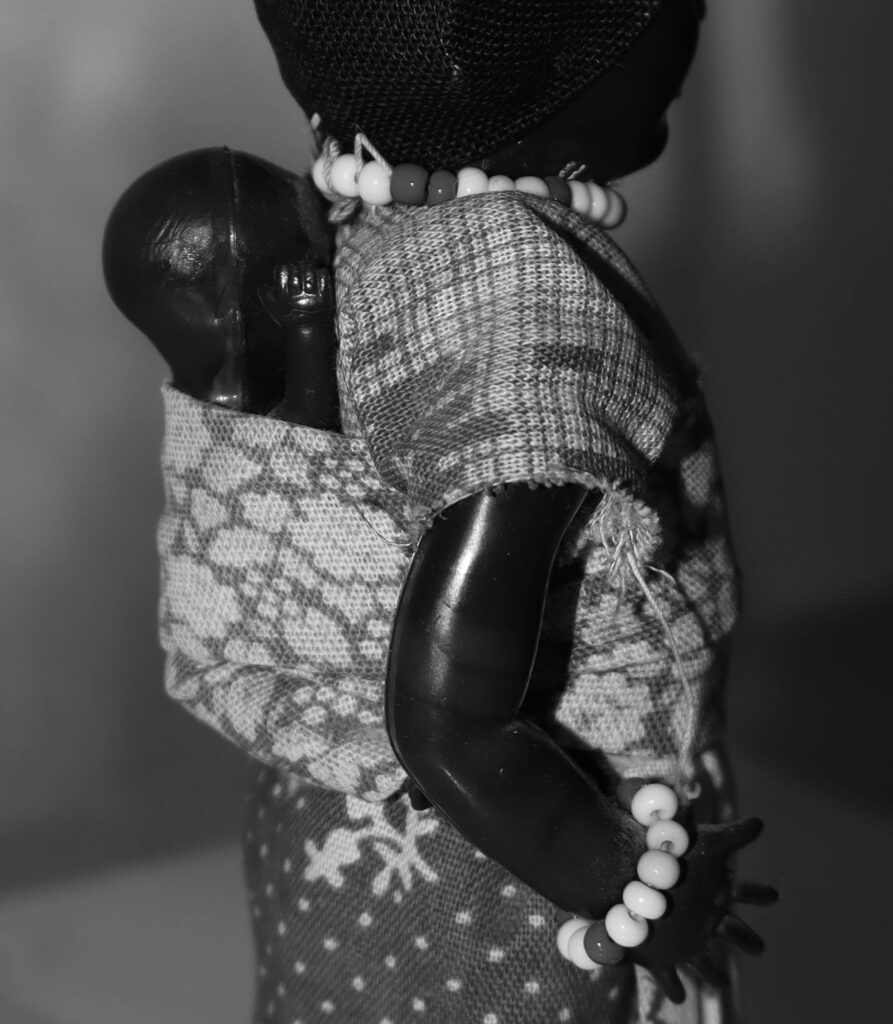
This is a close up of a doll given to my auntie as a gift from her friend who visited caketown during 1989.
Photobook process
In my photobook I am going to include both old images as well as new ones which I have taken. For these old photos I am going to crop and transform them so that there is nothing in the background.
Adjusting my images:
For majority of my old images the table is visible in the background. To fix this I am going to use lightroom tools to adjust it so that the photo is the only thing visible.
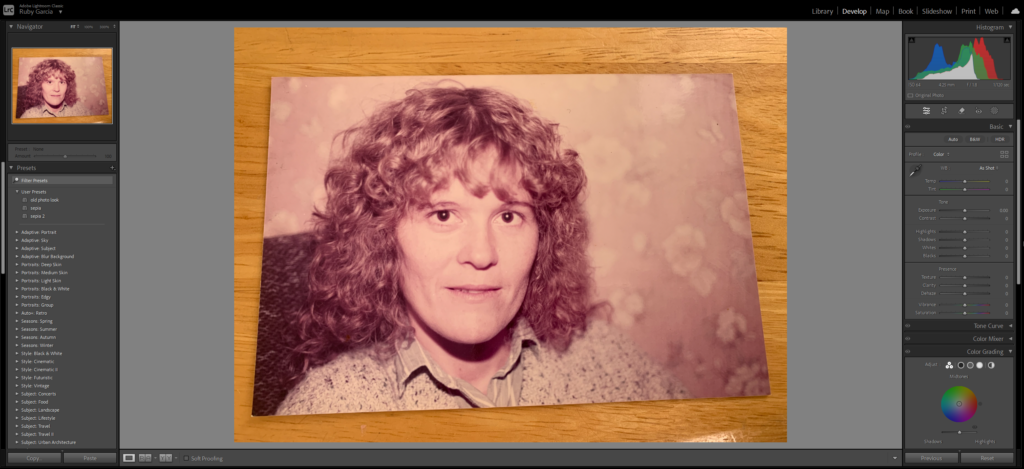
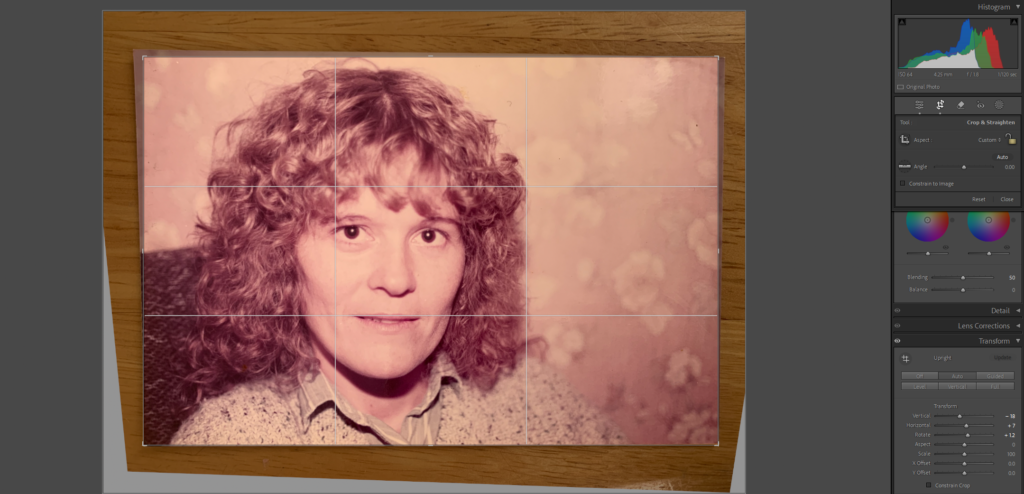
To do this I used the ‘transform’ option and adjusted the image slightly horizontal and vertical. I also rotated the image.
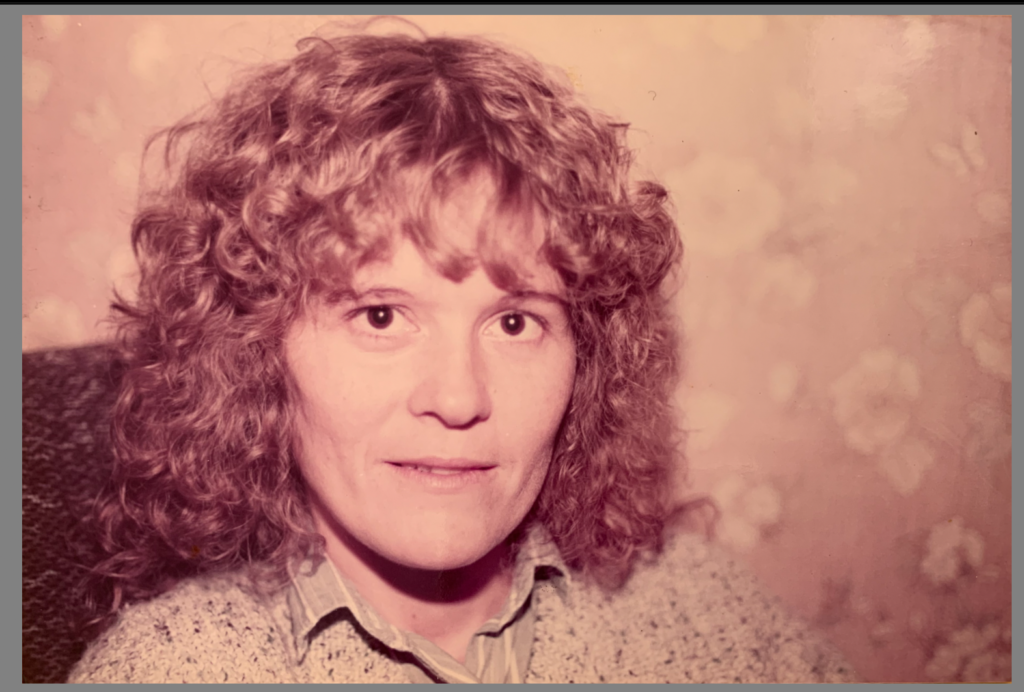
Finally I cropped the image after adjusting it. I will not make any other edits to the old images as I want them to have the same look as they already do.
Before:
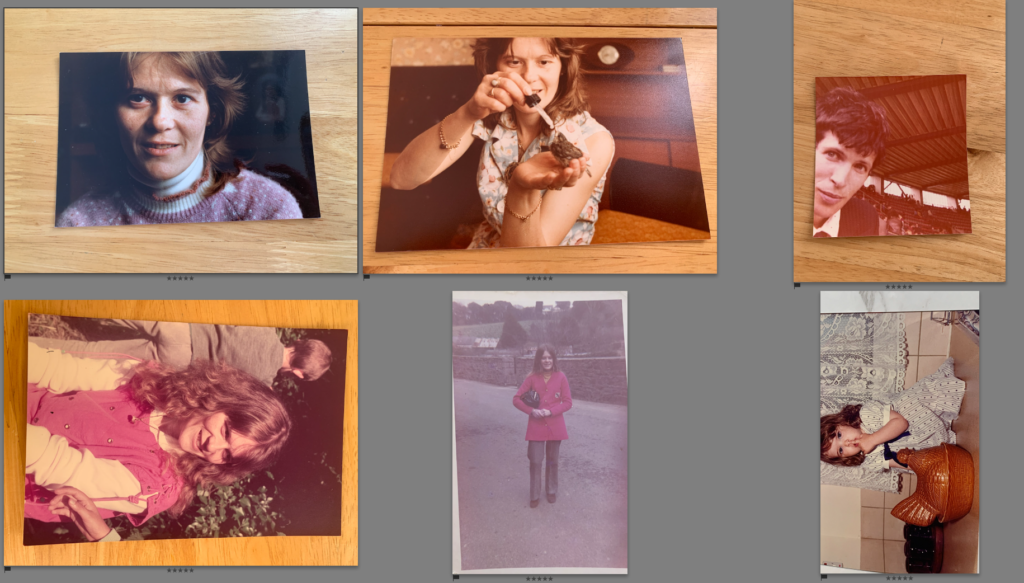
After:

Making adjustments:
1: I have adjusted the image on the right so that it is a similar tone to the original image. I will put these onto the same page therefore I want them to be the same sort of tone.
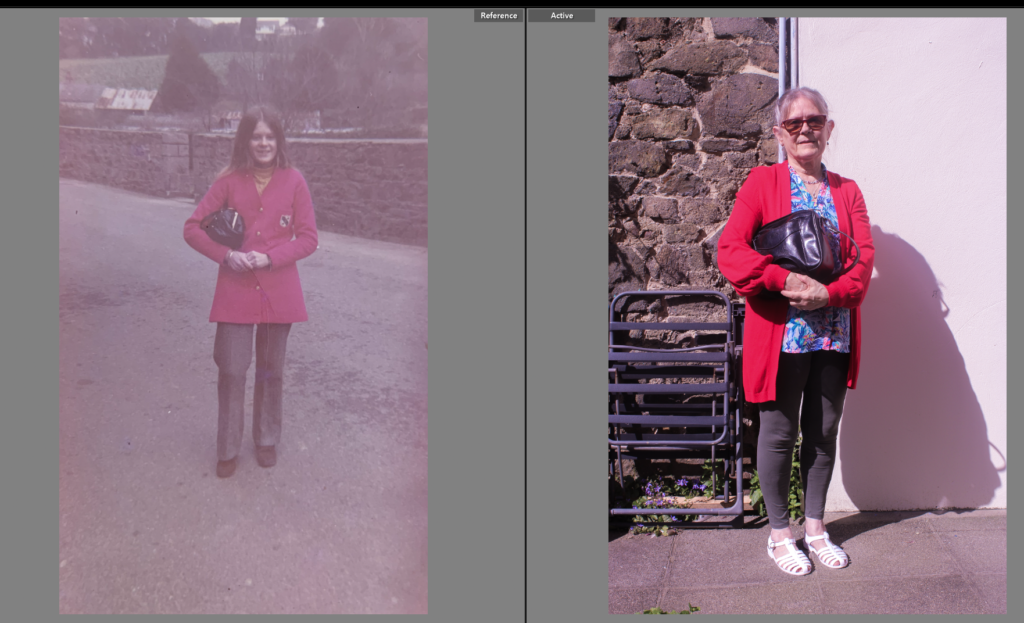
I also chose to adjust the hue and saturation of certain colours such as red as i found the red jacket to be too vibrant in the original image.
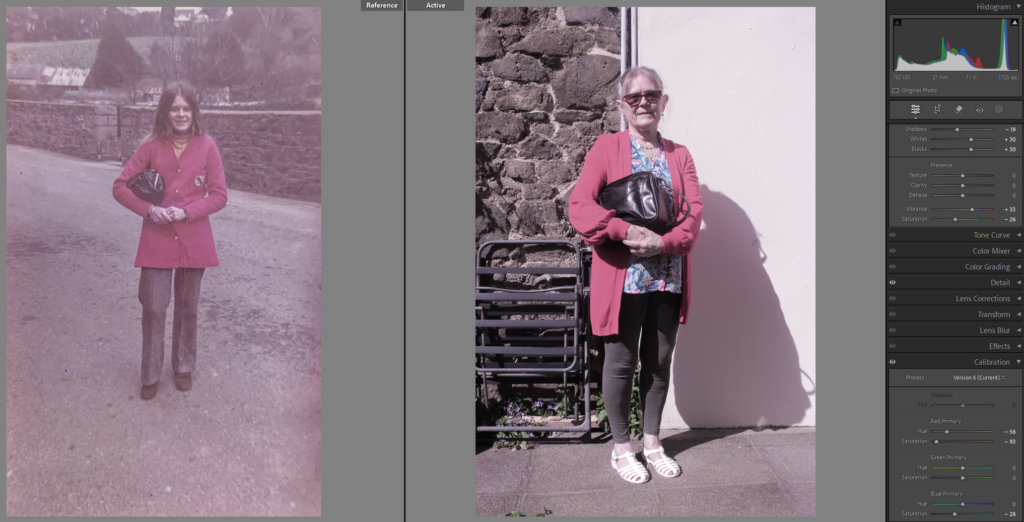
I also chose to increase the clarity on the original image as it is sort of grainy as it is a very old image.
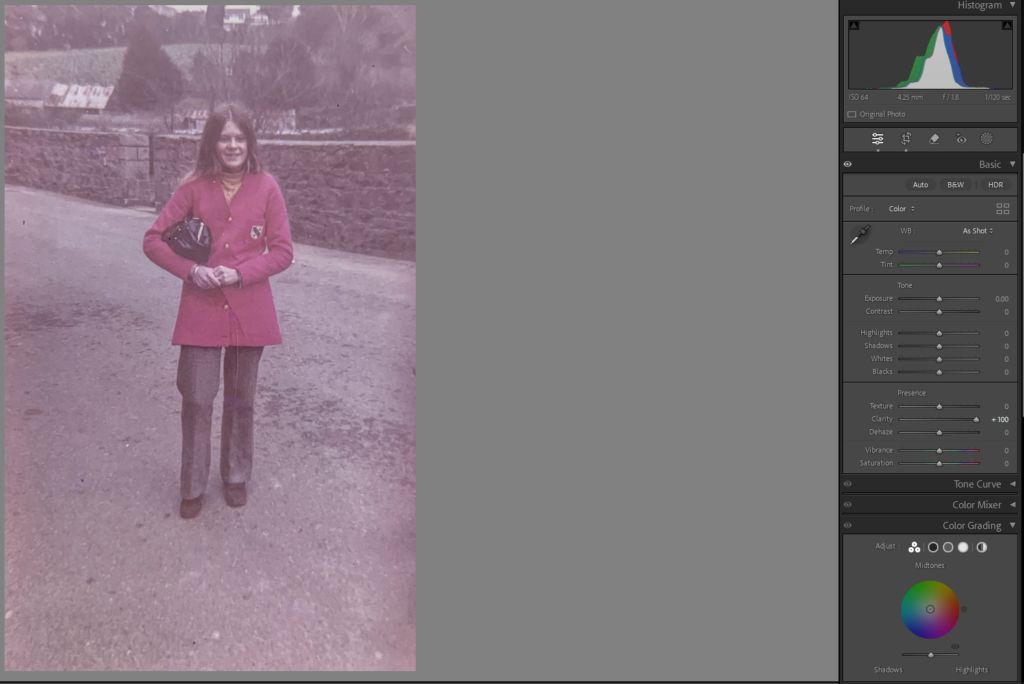
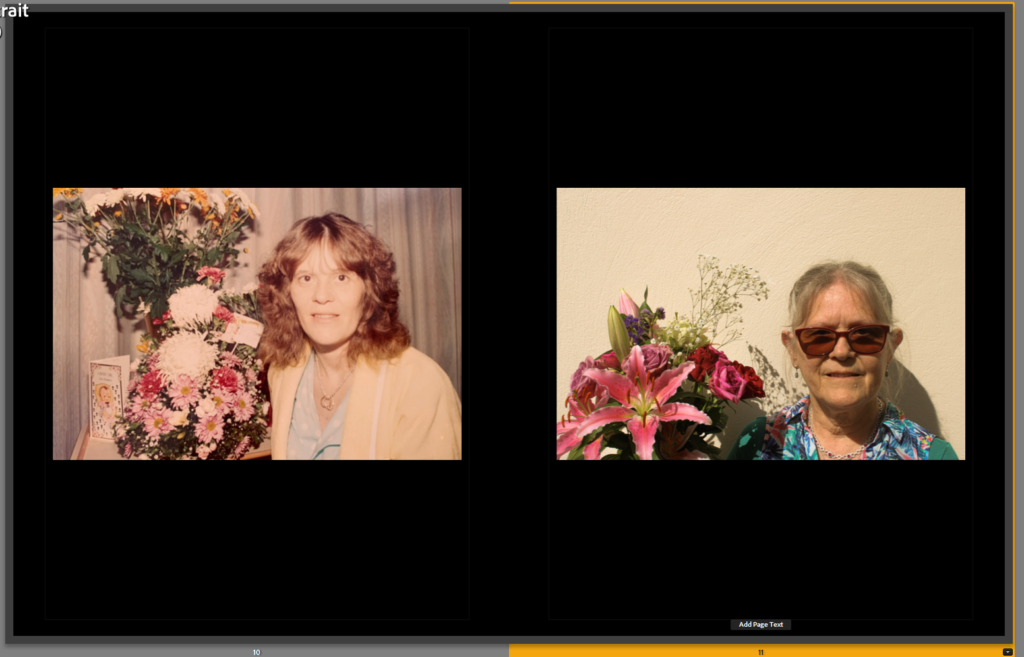
These two pages are two ideas, I perfer the second one which includes the wedding ring and the two photos on the second page.
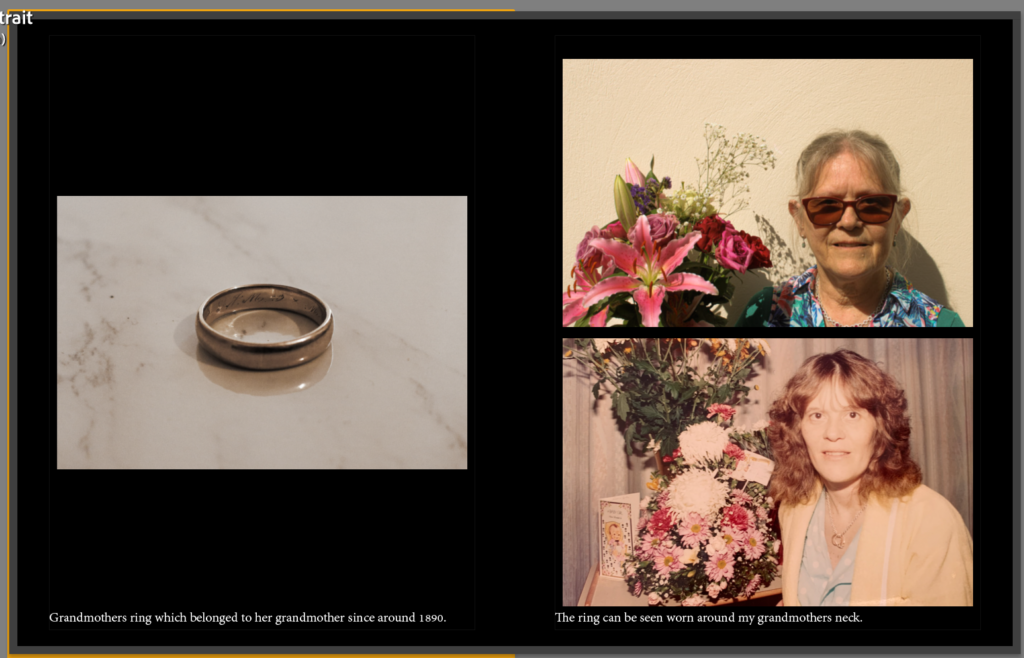
My layout
Front + Back cover ideas:
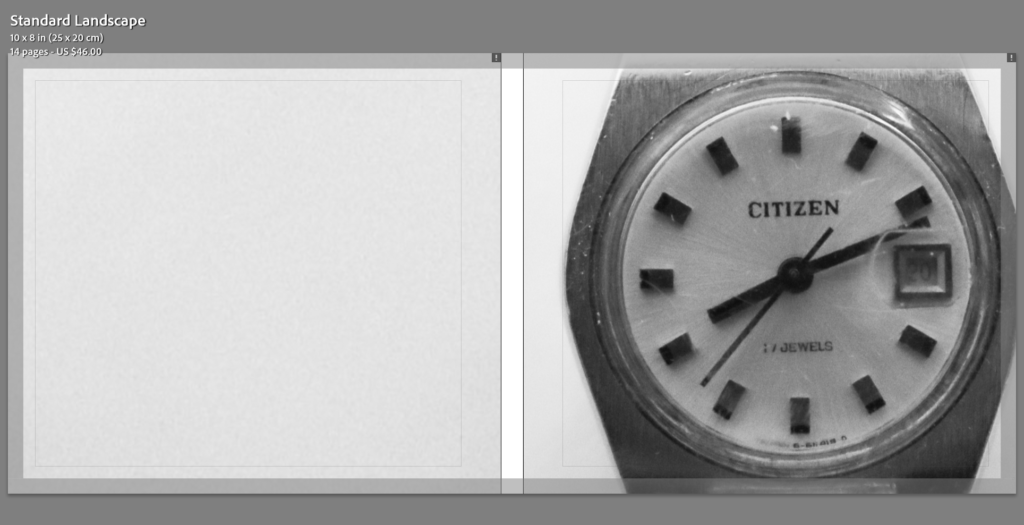
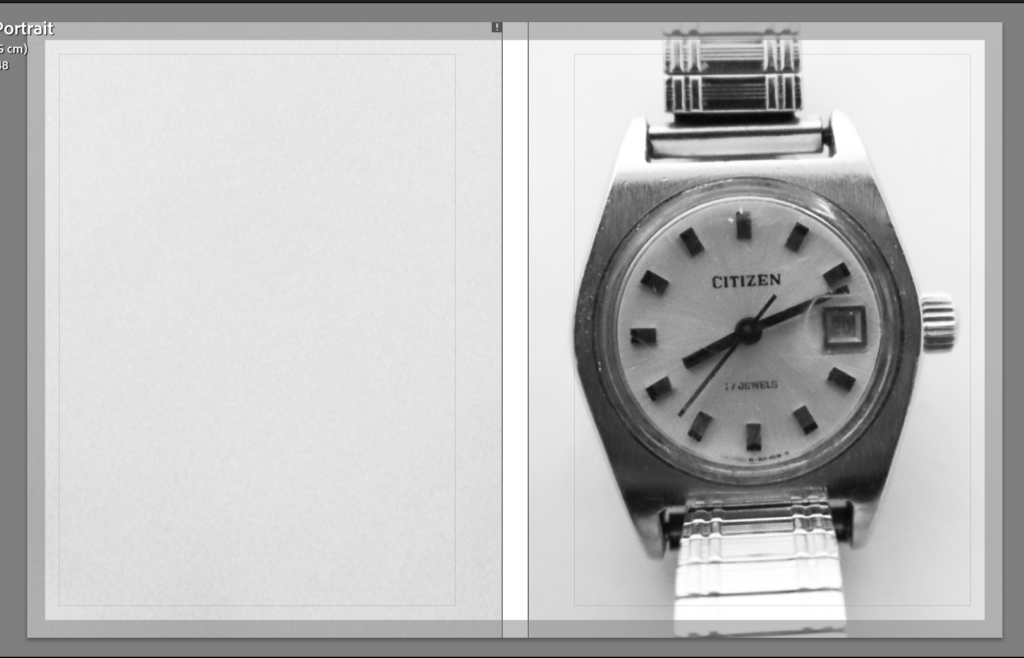
I am planning on using a watch for my front cover as my project is based on the past and how we change over time as well as memories. Therefore a clock will emphasise this meaning.
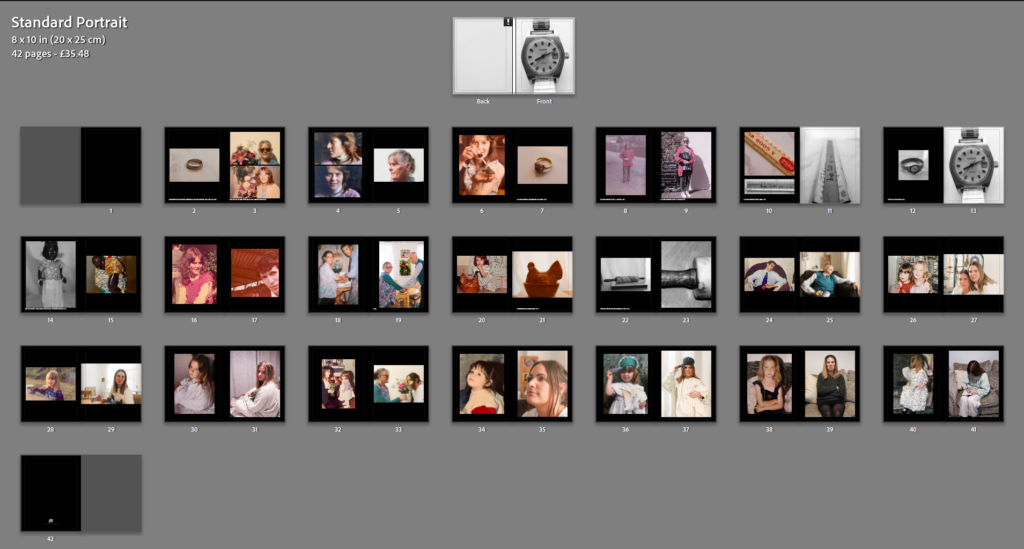
I decided to try a different colour for the background of the book, I then noticed that the front cover didn’t really suit the colour of the pages. Therefore I decided to change the front cover to a more warm toned image of my Grandmother.

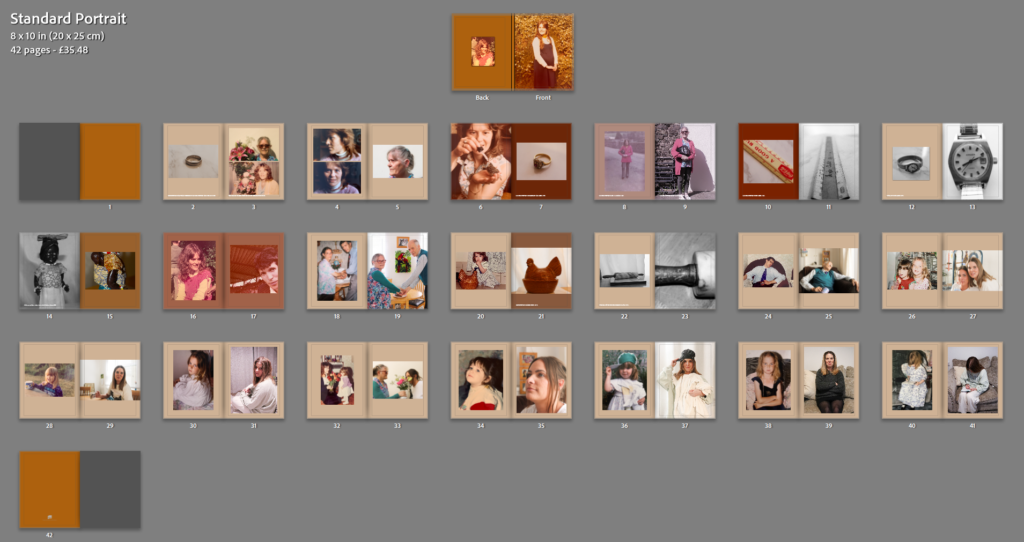
I then experimented with adjusting the colours of individual pages to suit the images on them.
Final Layout:
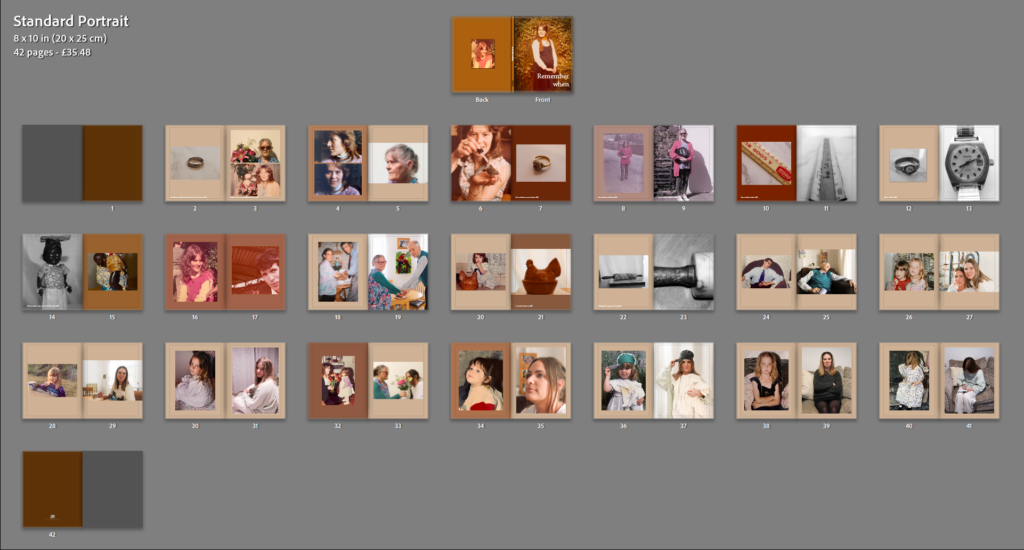
Essay
How can photographs be a way to connect to the past and a way to create a sense of nostalgia?
‘the power to photograph, the power to archive, the power to create a certain set of memories.’ 1– Collin Pantall
In my personal project I have chosen to explore the theme of nostalgia through photography. Nostalgia is a sense of longing affection for a period in the past, photography is a great way to create this sense as it allows you to capture this moment in time and lets you look back on these moments. To do this I studied the photographer Irina Werning whose most known project, “Back to the Future”, is all about nostalgia and how photography can be a way to reconnect to the past. To respond to Werning I looked through old photo albums to gather images which I was planning to recreate. In doing these photoshoots a sense of nostalgia was created for the models recreating these images, it was like reliving the past. Alongside Werning I also studied photographer Samiksha Chaudhary who created a project which also relates to nostalgia and memories. In my response to Chaudhary I photographed my families old objects, specifically my grandmothers. Whilst doing this I learnt more about my families past as I was told stories which accompanied each of the old objects.
Nostalgia itself goes back to the 17th century the Swiss medical student Johannes Hofer described the feeling of nostalgia as a disease, and those who felt it suffered from an ‘afflicted imagination’ 2. This was seen as a dangerous condition and it was thought to be caused by an imbalance of the four bodily fluids, which was a huge cause of disease in this era. It was also believed that it could cause physical health issues, especially if those affected were away from their native places for prolonged periods. It was not until the 18th and 19th centuries that nostalgia began to shift from a sickness to an emotional experience. The Romantic period was when nostalgia really began to be understood as a universal human feeling, an emotional reaction that was linked to memory as well as identity. Today, nostalgia is considered to be a complex emotional state which can create both positive and bad feelings.
Irina Werning:
Irina Werning is a freelance photojournalist who focuses on personal long-term projects. She is based in Argentina and has a bachelor’s degree in economics, a master’s degree in history and a master’s in photojournalism. Werning won the Ian Parry Scholarsip in 2006, the Emerging photographer fund in 2012, and he first place Sony world photography award for portraiture in 2012. Irina Werning became world-famous as a result of her project ‘Back to the Future’. In this project Werning photographed people as they reenacted their childhood portraits. This unique series shows how people look and feel 20 years after their childhood portraits, Werning took her camera and portrayed hundreds of people as they go back to their future. She was inspired to create this project after she scanned some older photos and after she ended up in one of the locations where one of these photos had been shot.
In this image taken by Irina Werning, three relatives have come together to reenact an old portrait of the three of them when they were younger. Although this may not create a sense of nostalgia for the viewer, it would have created one for them as it is a recreation of a time in their childhood. In her book The Photography Reader, Liz Wells stated, ‘memories evoked by a photo do not simply spring out of the image itself, but are generated in an intertext of discourses that shift between past and present.’4 This suggests that the sense of nostalgia created from old images is subjective to the viewer. One viewers may see an image as nostalgic whereas another may not, this is because everyone has a different past and presence which may not connect to these images in an emotional way.
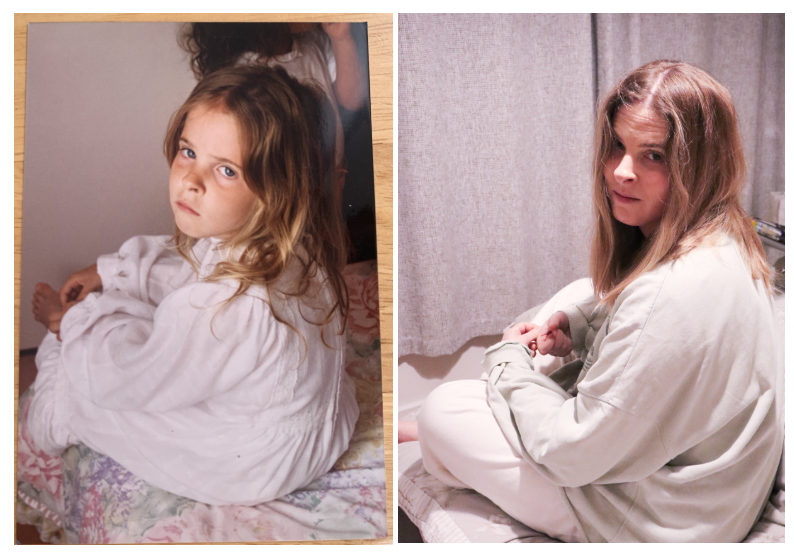
My response to Irina Werning consisted of me photographing mainly my mother. When recreating these old found images it created a sense of nostalgia not for me but for her, as she was the one who lived the moments captured in these photographs. This adds to the concept that the feeling of nostalgia is subjective as everyone gains a sense of nostalgia from different things depending on their past.
Samiksha Chaudhary
Samiksha Chaudhary believes objects function as memory keepers and he found himself reliving these memories through photography. This all began in lockdown when Chaudhary found himself stuck in Mumbai, whilst his parents were back home at Calcutta. Chaudhary found this time lonely as he missed his parents, therefore he aimed to revive and relive little moments which were created by these objects. He released a set of photographs taken of these objects as part of a bigger collection which he previously shot during 2019 whilst being at home with his parents. Chaudhary found photography to be a way of tracing back memories all the way to his childhood. It was also a way to feel closer to his parents and a way to hold onto old memories. Each of his unique objects tells a story which takes him back to his home. Chaudhary wishes to capture the object’s value to his personal history, rather than the value of them. These objects create a mental map to his childhood and they are also a way of knowing his family’s history. With the objects laid out they all tell a story. They capture a lifetime within them, not only his own but also that of his parents and relatives.
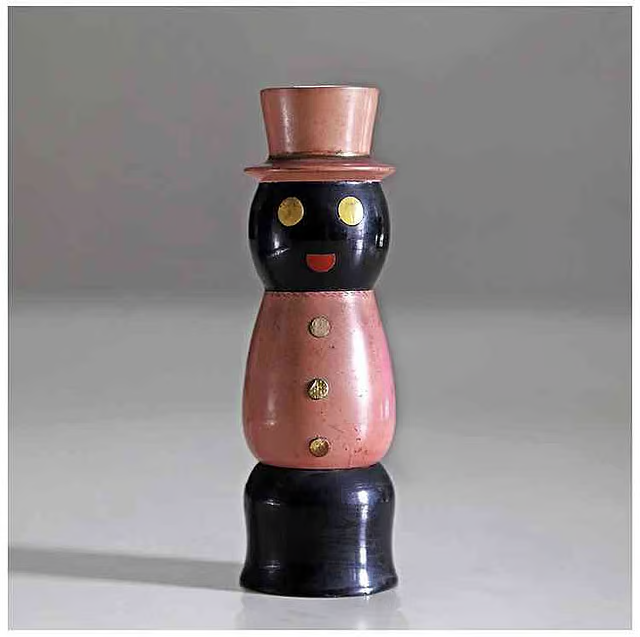
This image by Chaudhary is taken of a wooden doll, a wedding gift to his mother. It held a small vial of perfume and this amongst many other objects were showcased in his home when he was growing up, some were inherited whereas some were received as gifts, and some were collected by his parents themselves, mainly his mother.

In my response to Chaudhary I chose to photograph mainly my grandmothers old items, one of which being a ruler from when she was ages 14 during 1966. Whilst photographing many of these objects I gained a sense of nostalgia as she told me the stories which accompanied each of these valued items, despite not experiencing this time period myself. Looking at all these old items also allowed her to travel back in time through bringing back old memories which she has connected to these objects.
To conclude, photography can be a way to connect someone to the past. This can be seen in both Irina Werning and Samiksha Chaudhary’s work, however they both create this sense of nostalgia in different ways. For example, Werning focuses on portraiture and reenacting older images, reminding people of those times in the past and reliving old memories. This sense of nostalgia was felt by my family members when I photographed them restaging old images. On the other hand Chaudhary photographs objects of his parent past, creating new memories of a time he didn’t experience. Which is what I experienced when photographing my grandmothers old items, I felt a sense of nostalgia for a time I didn’t experience. Overall photography is largely linked to nostalgia as it is a way to both relive old memories as well as gain new memories of the past.
Bibliography:
- Collin Pantall (2019) Remembering the Past, Remembering the Present. Location of site: Here ↩︎
- Johannes Hofer (1688) Coming home again. Location of site: here (Page 2) ↩︎
- Image from project ‘Back to the Future’. Location of image: here ↩︎
- Annette Kuh (2003) Remembrance The child I never was. Location: here ↩︎
Comparing old photos to new ones
In this blog post I am going to be comparing the old images to the new images which I have created inspired by Irina Werning.
1: For this first image I took I photographed my grandmother in a red jacket similar to the original image which was taken when she was 16, and in the new image she is aged 71.
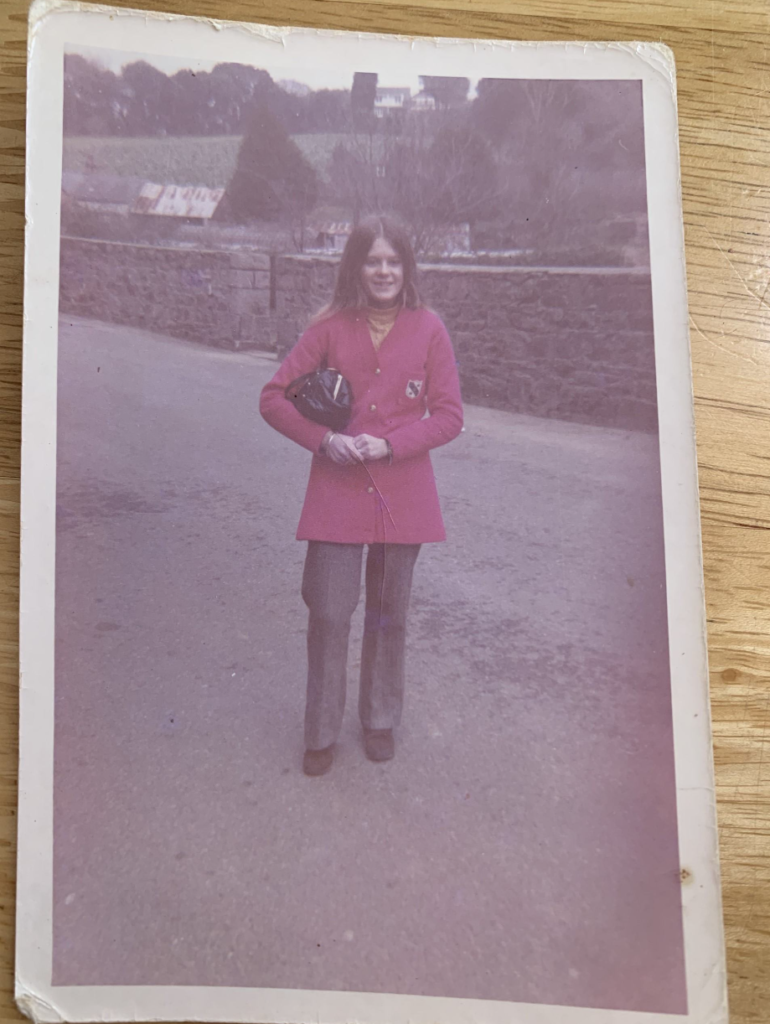
1968
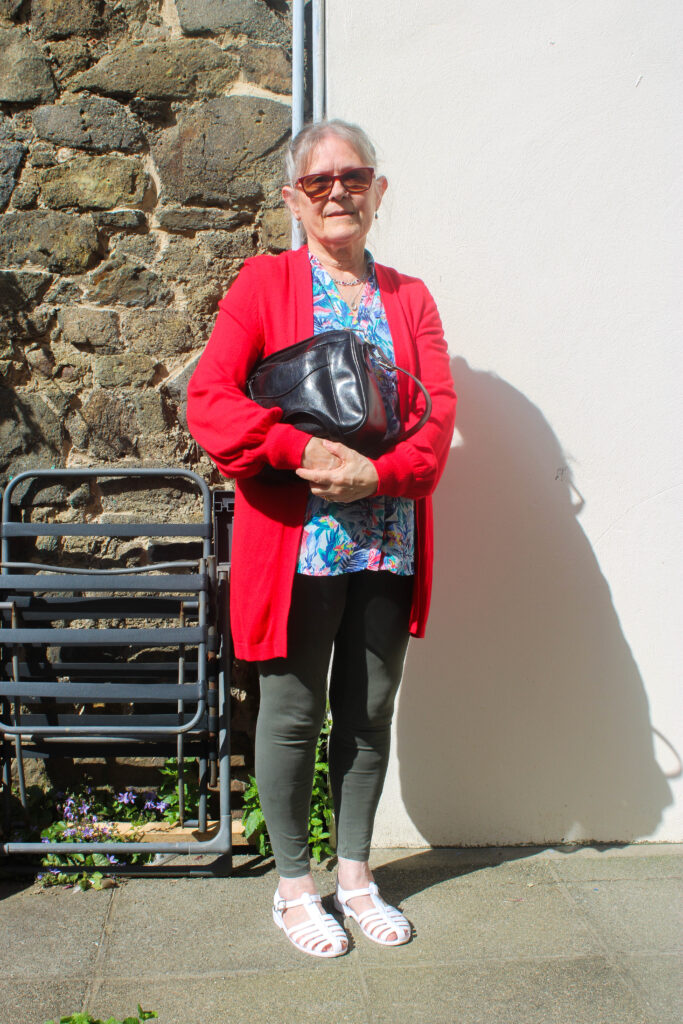
2024
I think this image is successful as I was able to achieve some similar colours such as the red jacket and the handbag. I may try editing the new one to match the tone in the old one.
2:
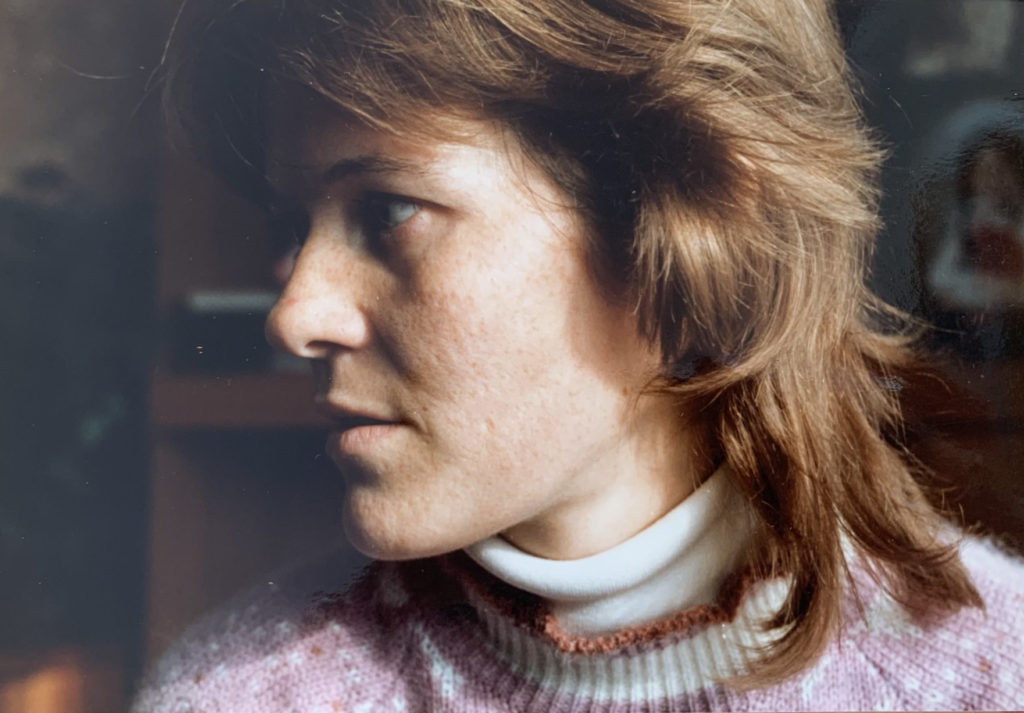
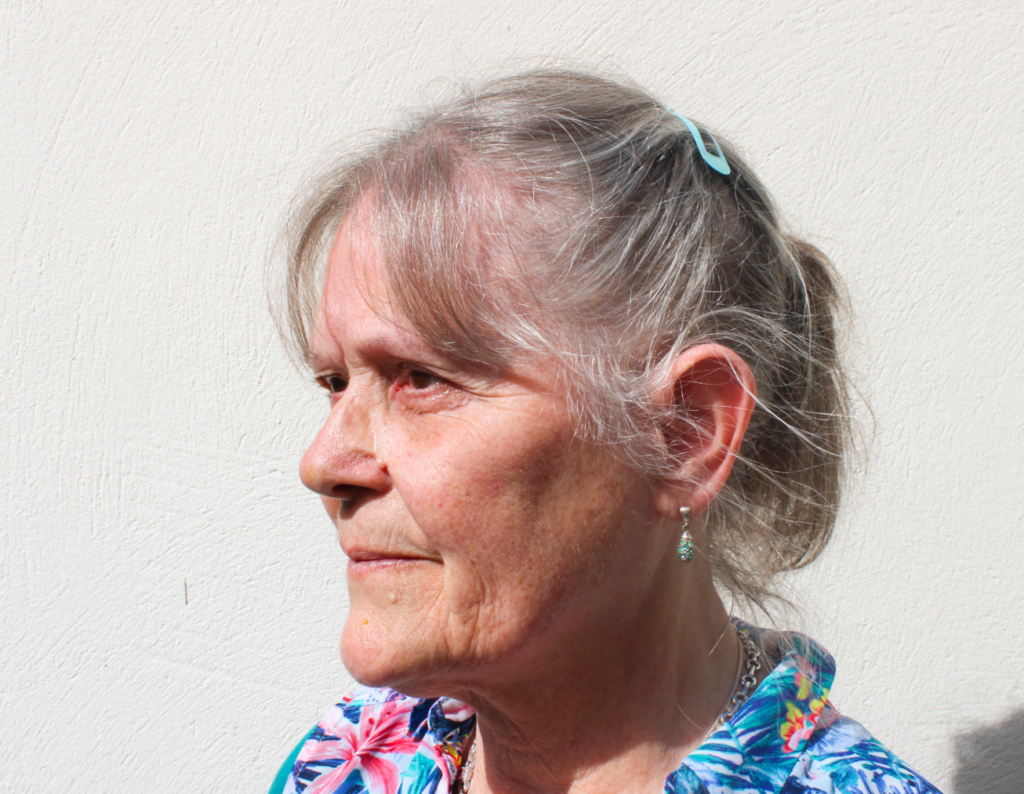
3: To recreate this image I made sure to have the model wear dark clothes similar to the original image. She also pulled a similar face to the original one as well as crossing her arms.
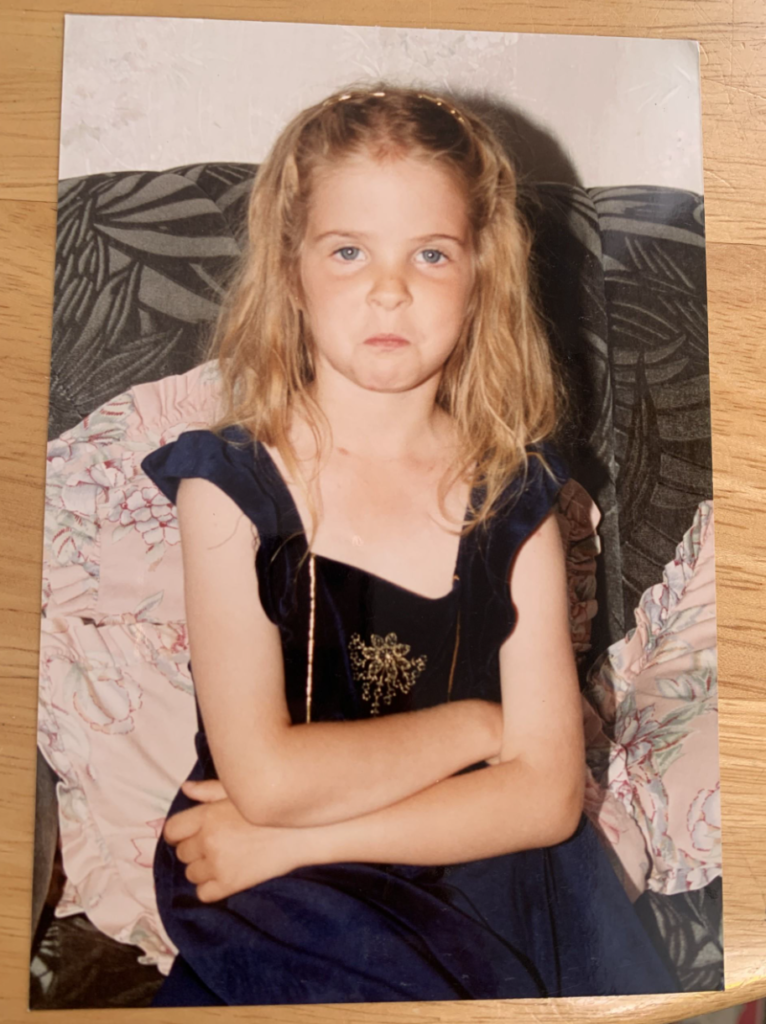
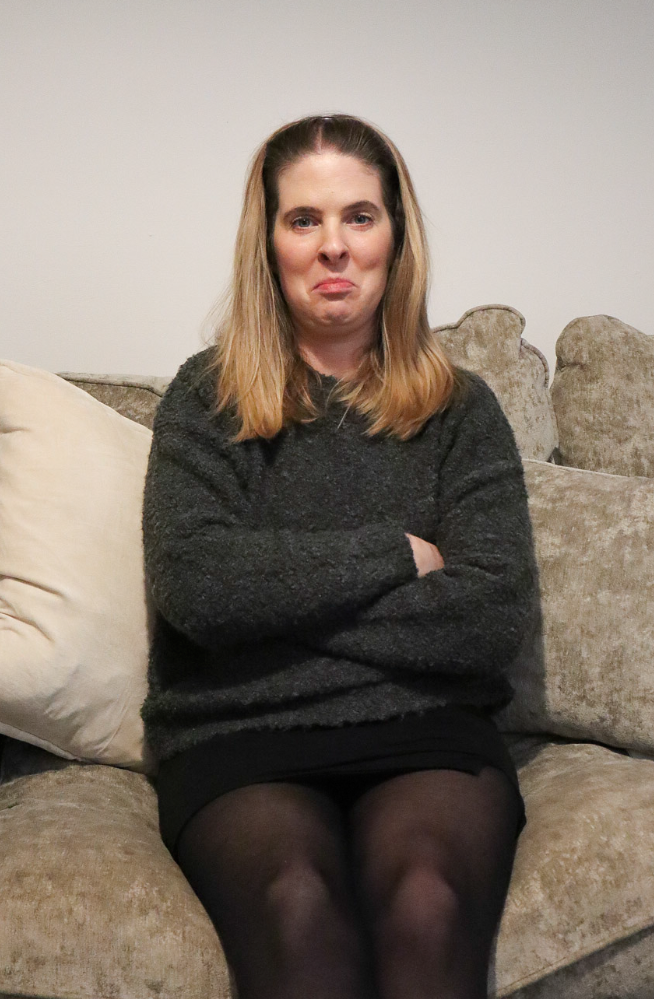
4: This is one of my favourite images which I have recreated as I managed to capture the same purple/ pink tone of the old image using lightroom and adjusting the tint of the image.
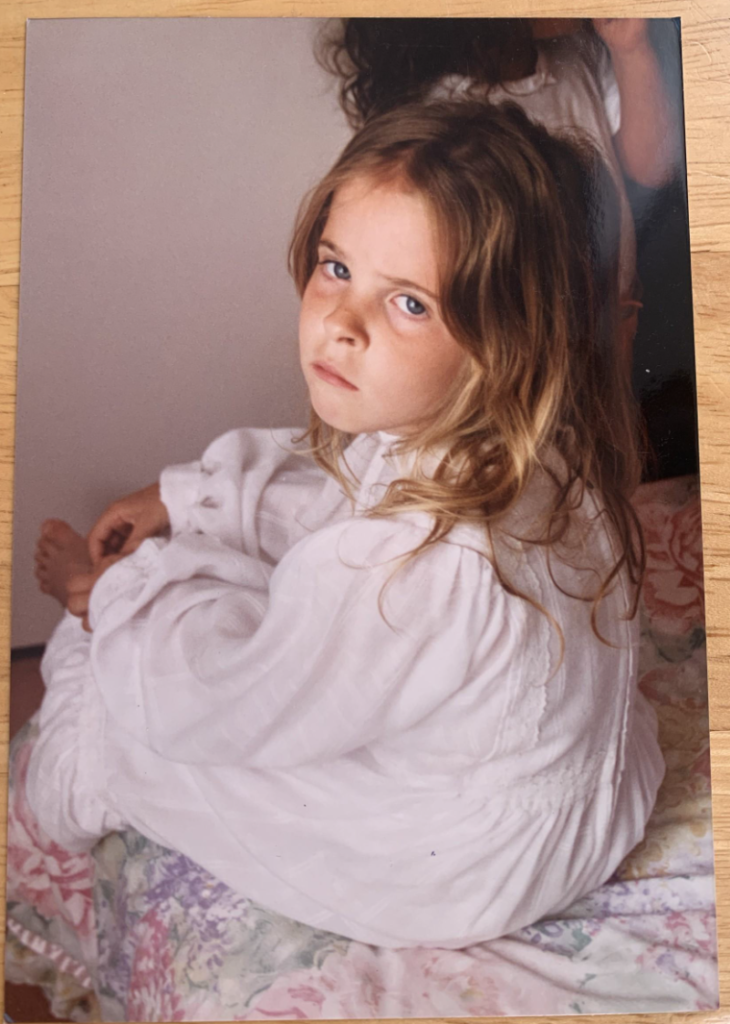
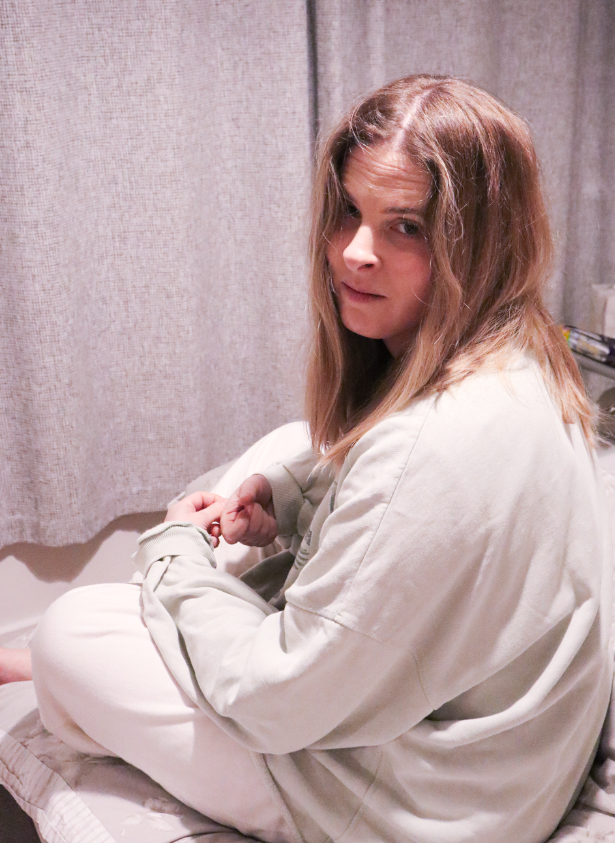
5.
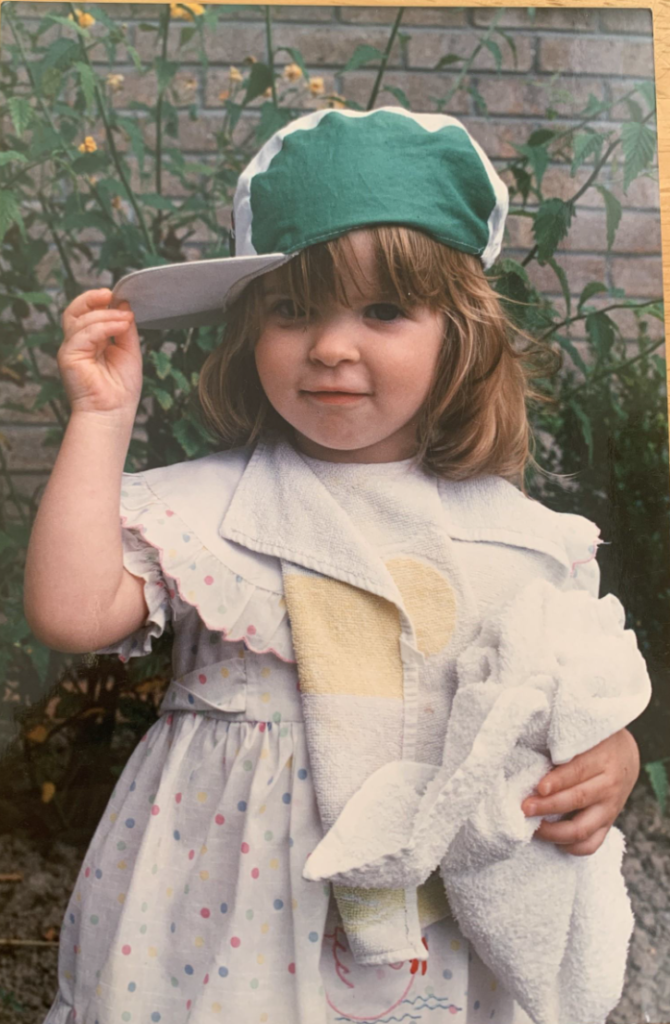
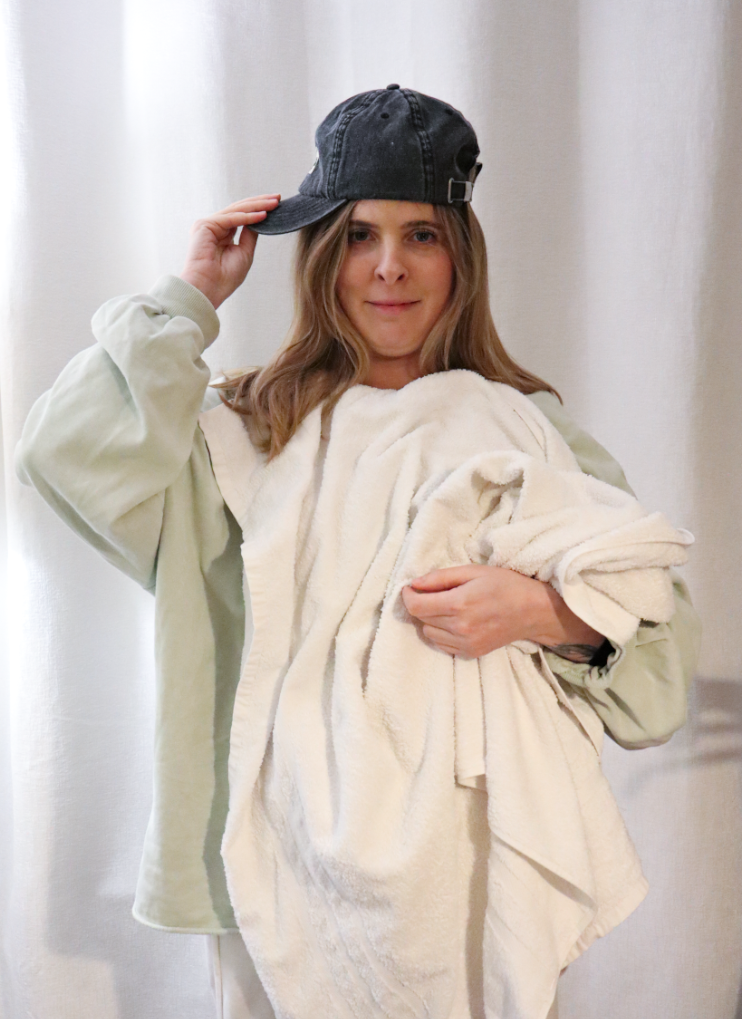
6:
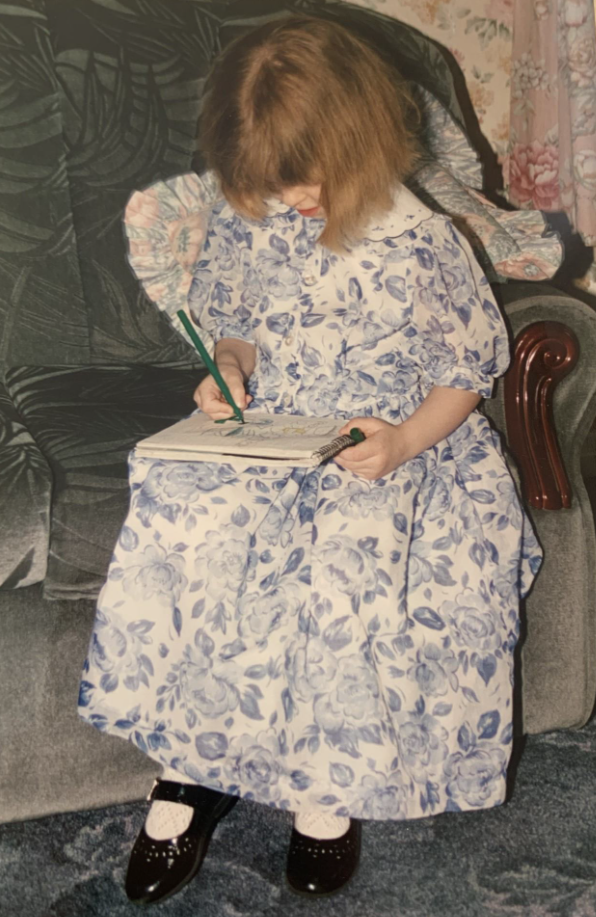
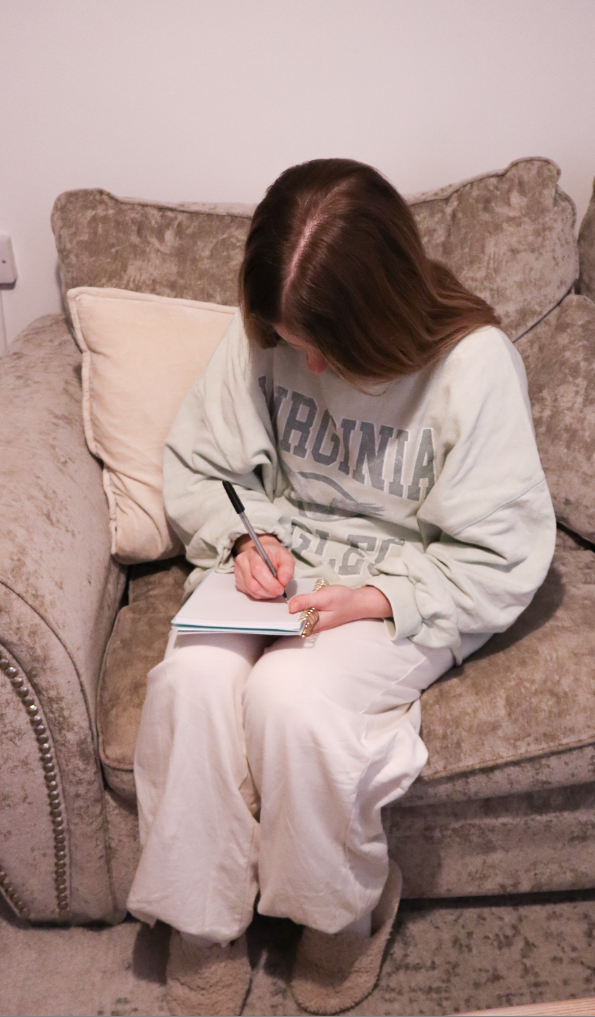
Photoshoot 3
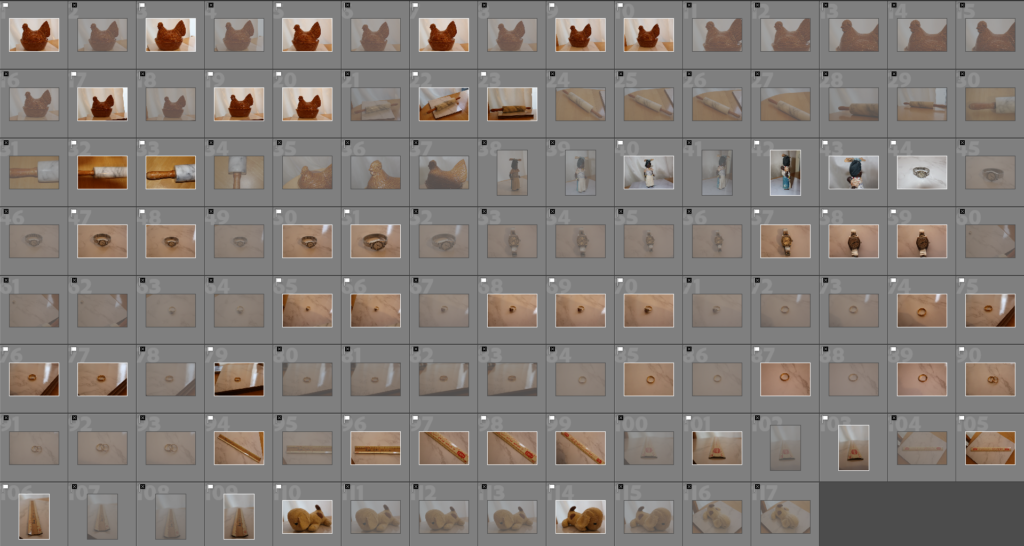
I was inspired to create this photoshoot based on the work by Samiksha Chaudhary who created photos of objects which held meaning and memories to him and his family. I chose specific objects mainly related to my grandmother. I went through my images and selected my best images and considered which ones I am going to edit.
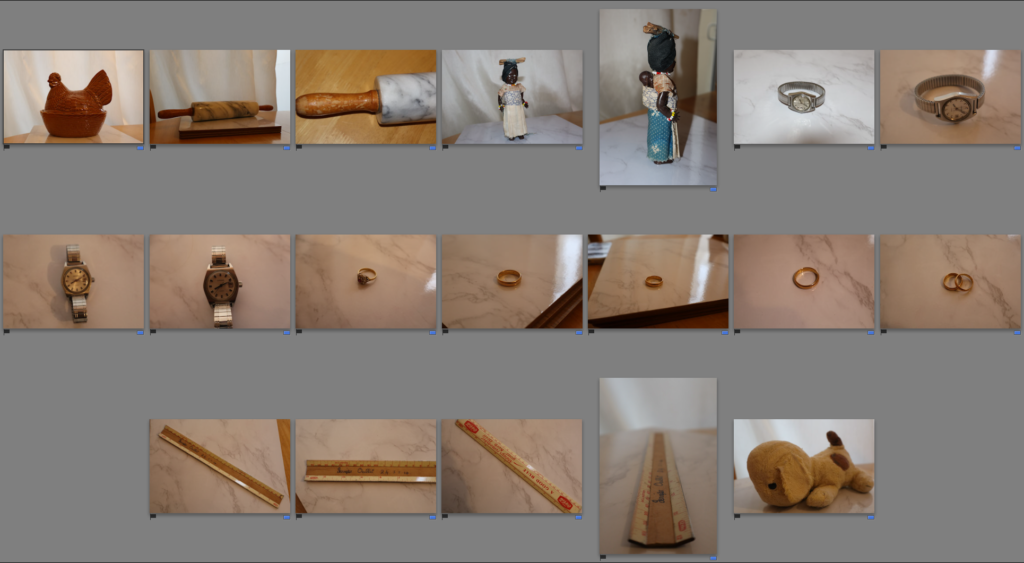
I selected these as my best images which I will edit.
These are all my images which I have edited in colour.
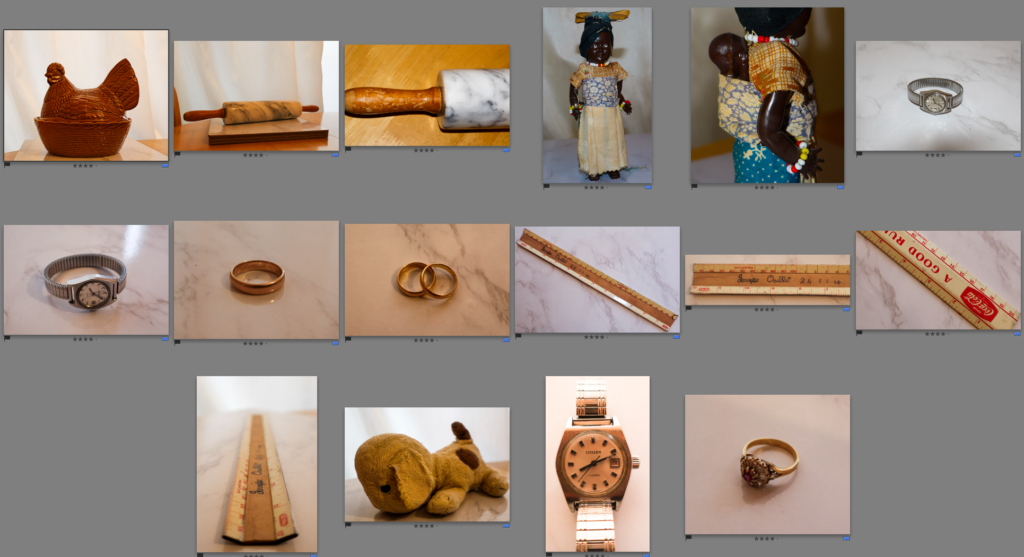
These are all my images which I have edited in black and white.
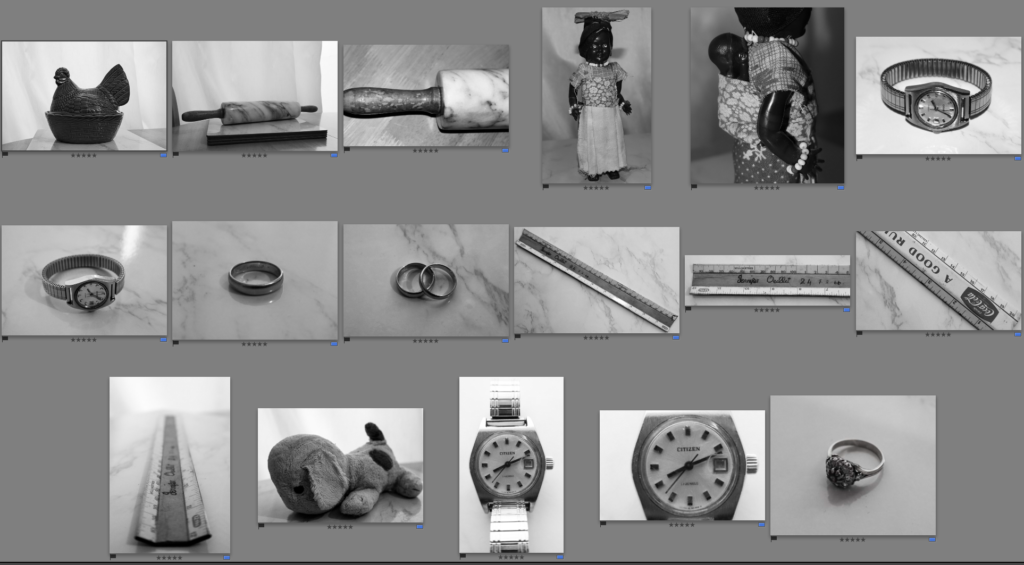
Best edits:
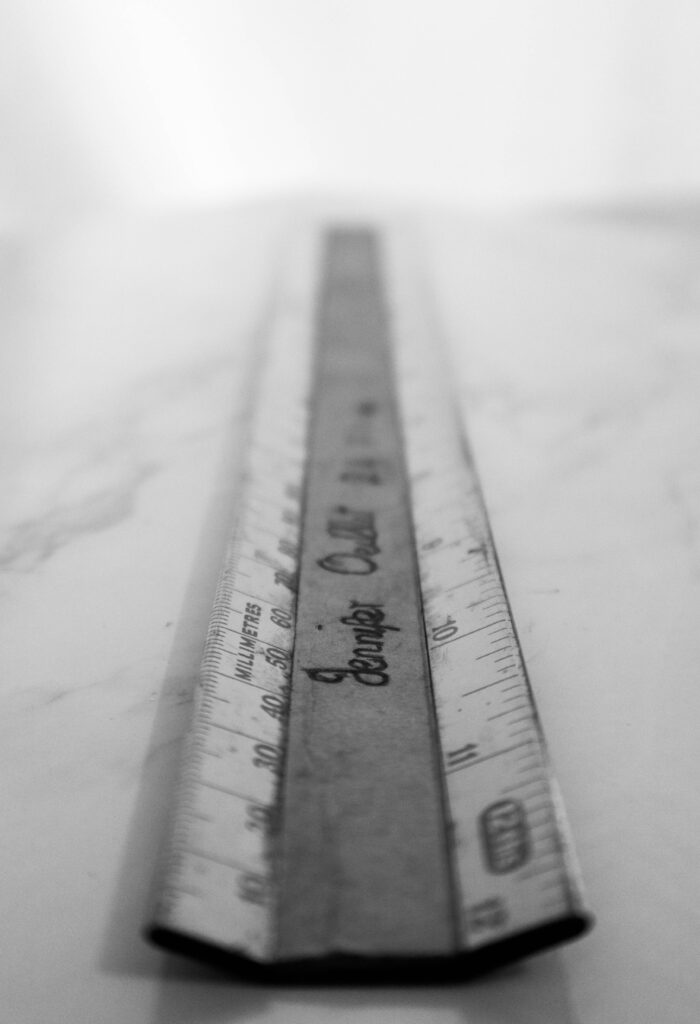
This is my best edit from my shoot as I like the unique angle as it creates leading lines where it draws the viewers attention deeper into the image. As the ruler extends the image becomes more blurred, this creates the idea that memories also fade as they get further away. This ruler belongs to my grandmother and is from 1966, when she was 14 years old.
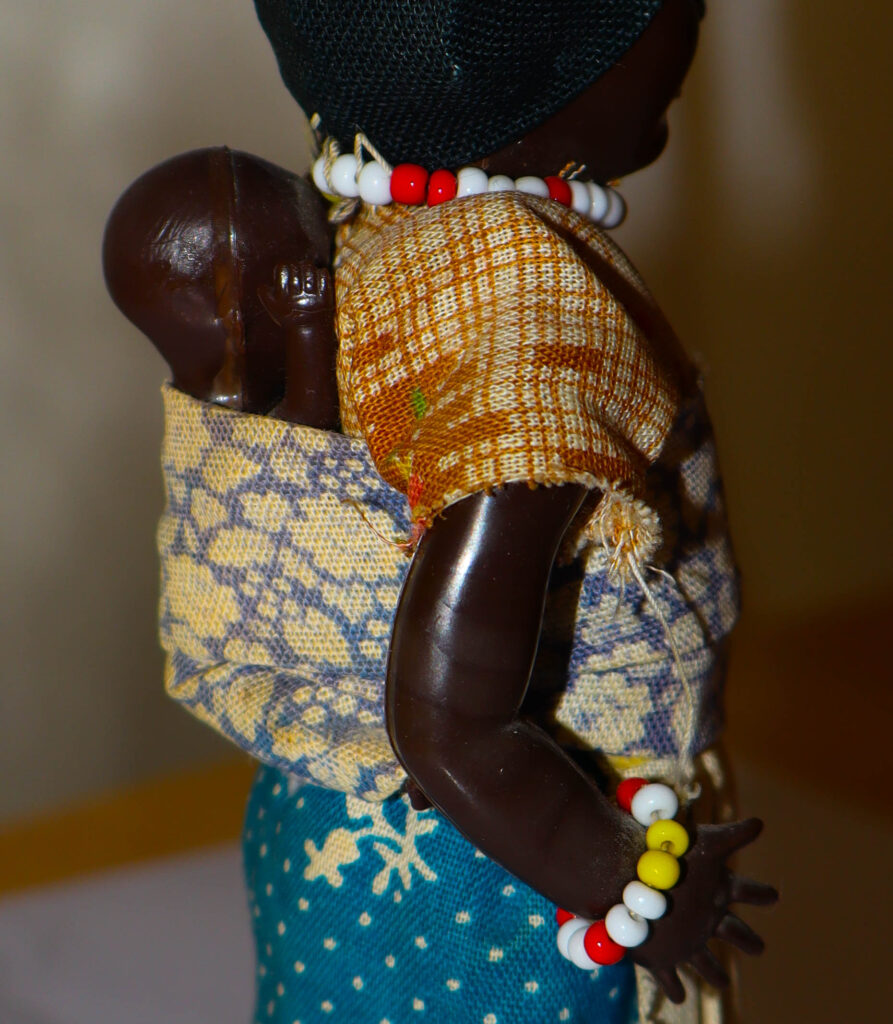
This is another edit which I like as I like the close zoomed in shot with the variety of colours. I will be using this image along with some other coloured images in my photobook. This doll holds meaning to my auntie as it was a gift given to her during 1989 from a friend who visited Caketown.
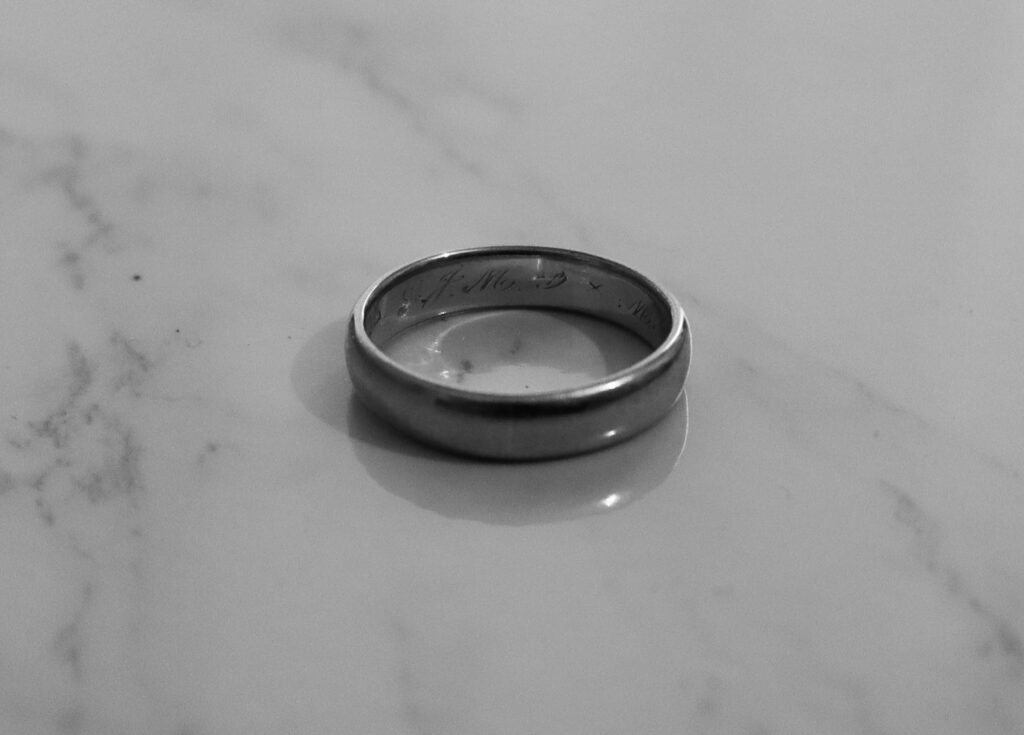
This edit is of my great great grandmothers ring and is from around 1890, it now belongs to my grandmother after being passed down the generations. In the ring I managed to capture the small details of the engraved names of my great great grandmother and grandfather.
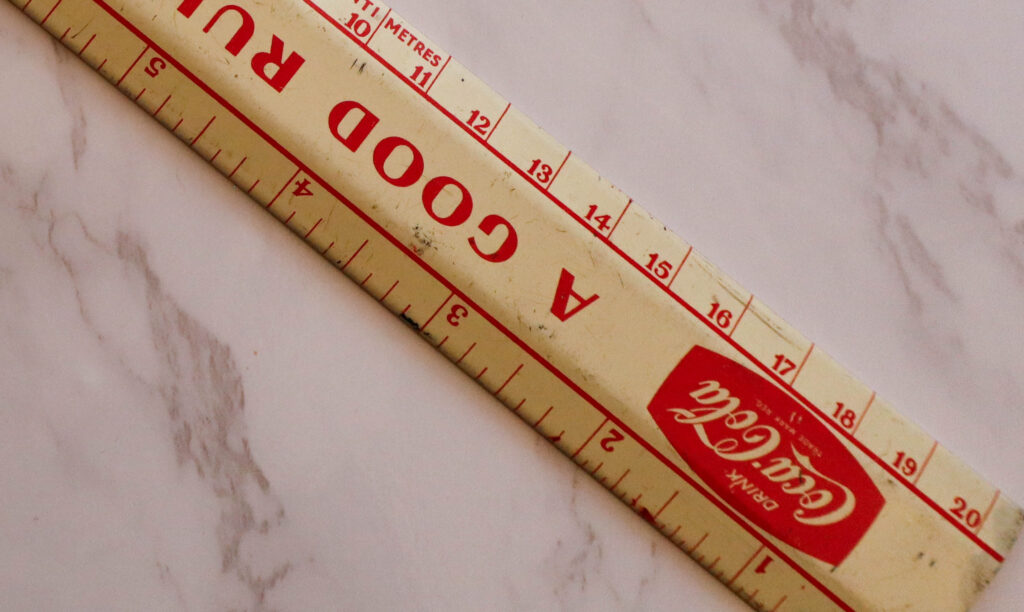
This is another edit of the ruler which I like as it is at another unique angle, I also like the colours within the image.
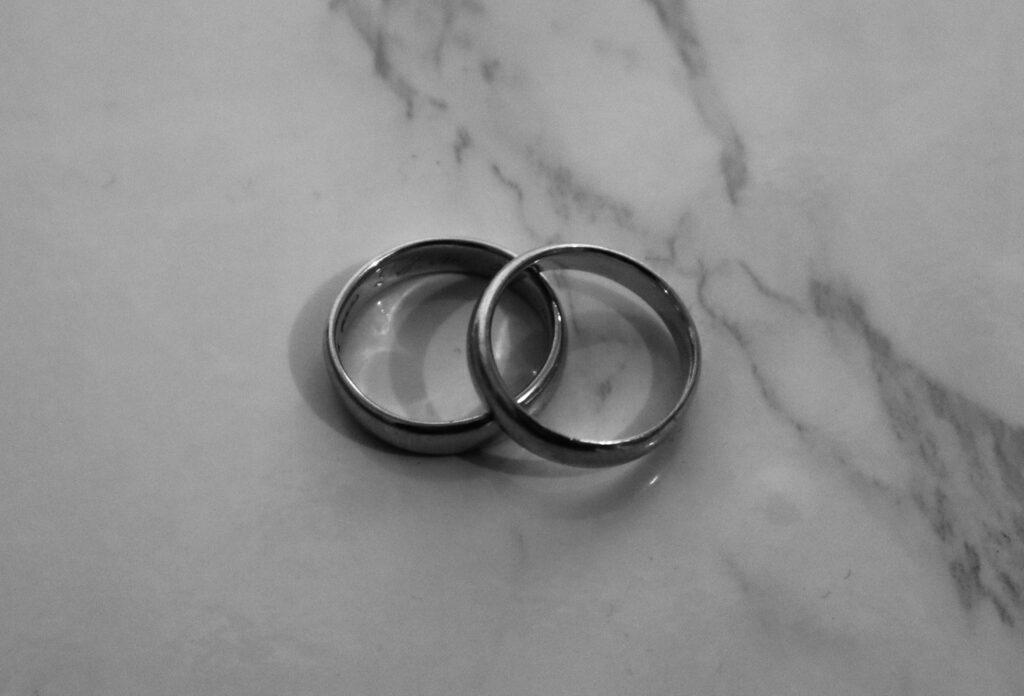
This image is of both my grandmothers’ ring and her grandmothers’ ring together.
Evaluation:
Overall this photoshoot was successful as I managed to photograph many old objects which hold memories and meaning to my family members. If I was to improve next time I would use a different camera as the one I used did not allow me to zoom in much.
Sepia Photography
Within my personal project I aim to recreate older images, the sepia effect can cause an image to look aged therefore I think this will be a useful effect to use within my images when restaging them.
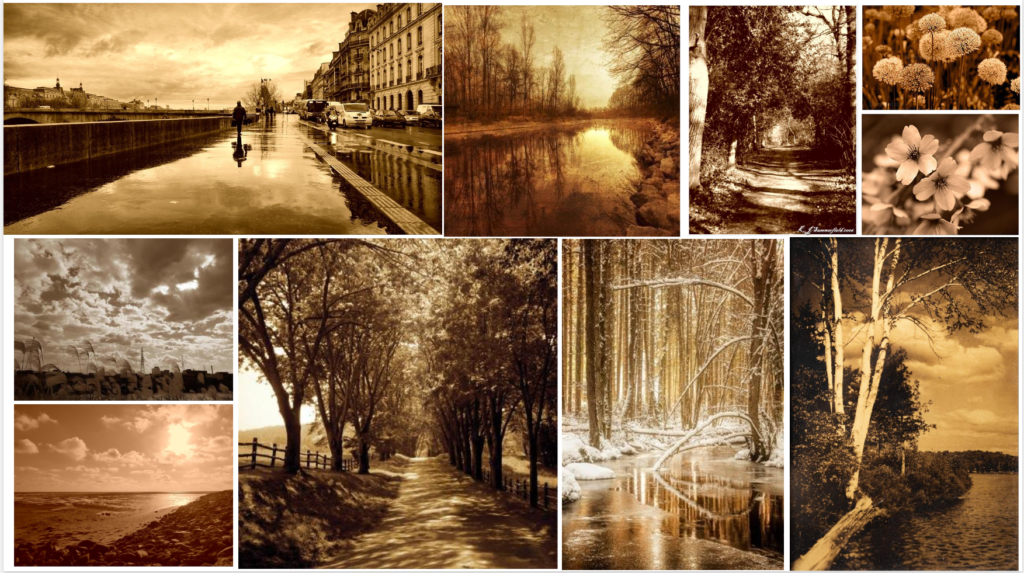
Origin of sepia photography
The sepia toning process was first developed in the 19th century as a way to improve the durability of photographic prints. At the time, photographic prints were highly susceptible to fading and deterioration, which made it difficult to produce images that would stand the test of time.
My sepia images:
To create this warm orange tone (sepia) I adjusted the tone curve and experimented to see which would result in this tone.
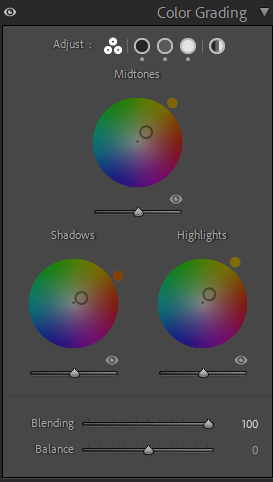
After I found settings which worked I decided to create my own preset named ‘sepia’ so that I am easily able to apply it to my other images rather than going through the same process again.
